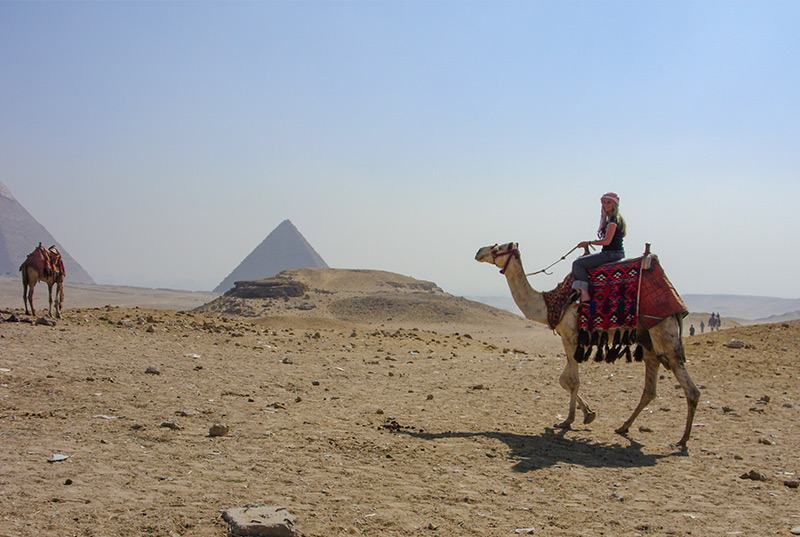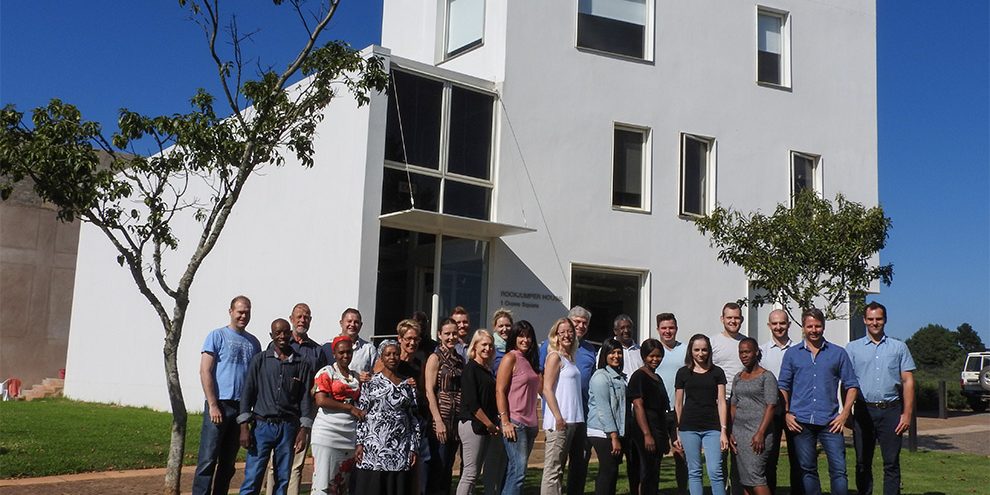
On August 16, 2019, Rockjumper turned 21! It has been an incredible journey, and to celebrate we thought we would share 21 of our favourite stories from the times we’ve shared so far. So, every week for the next 21 weeks, we will be adding a new story from a Rockjumper Team member, tour leaders and office staff alike.
I was in my early teens when I knew I wanted to become a birding tour leader. In my personal journey in pursuit of field experience, whether traveling on my own or volunteering and working in birding lodges, one name always stood out – Rockjumper – as Rockjumper had begun expanding quickly outside of Africa at the time, and was still quite “mysterious” in the New World. I didn’t meet anyone from Rockjumper until 2014, when Clayton Burne had recently finished the Colombia 1000-bird Mega tour and had come to Cabañas San Isidro, where I was working at the time, to get some targets. We chatted about the tour and various other tours that Rockjumper was running, and I knew this is where I needed to be!
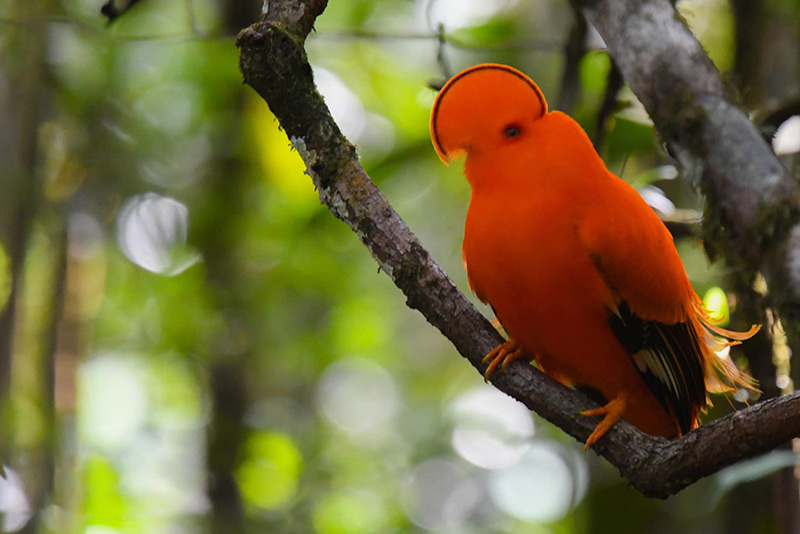
I didn’t meet anyone else from Rockjumper until 2016, when Adam Walleyn had come on a couple of seabird pelagics out of North Carolina on the Stormy Petrel II. I was working on the boat as a tour leader, and we became fast friends – and had amazing views of Gervais’s Beaked Whales in the process! I told Adam that my ultimate goal was to become a full-time birding guide, and he mentioned that Rockjumper was likely a good fit, which made me feel very hopeful. In 2018, an email from Clayton with a possible job offer from Rockjumper arrived in my inbox. I was the happiest person in Central Ontario that day, and the rest is history!
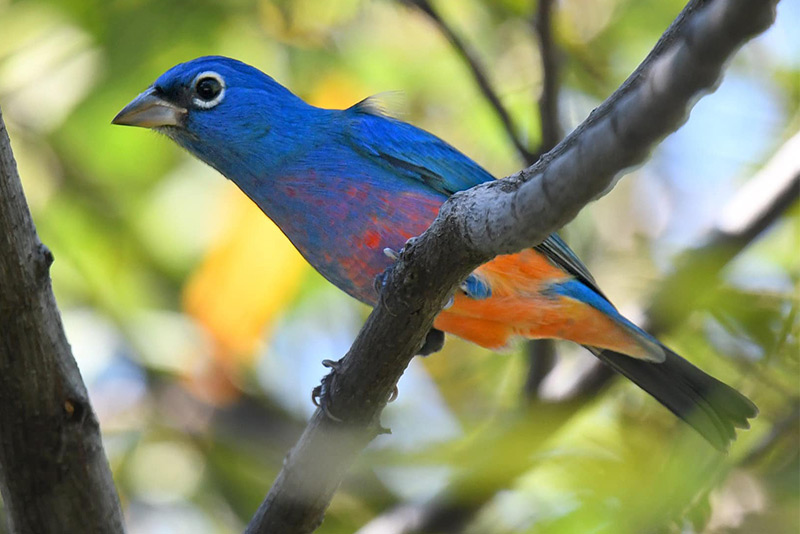
Being relatively new to the big bird tour scene, it was a little intimidating getting to grips with the protocol, but I received a very warm welcome from everybody and all of my questions were answered very quickly and efficiently. It was very evident that a birding tour is really like an iceberg; guests only see the finished product, while the majority of the work happens behind-the-scenes in making the tour happen. Hiring local guides, arranging transport, crafting the itinerary etc. is a titanic process, and Rockjumper has an amazing group of people working tirelessly to keep the clients (and tour leaders!) happy and informed. I feel very privileged to be working alongside an incredible crew, and to be able to show guests birds from every corner of the earth, learning more about them, their habitats and meeting amazing people along the way. My life will never be the same!
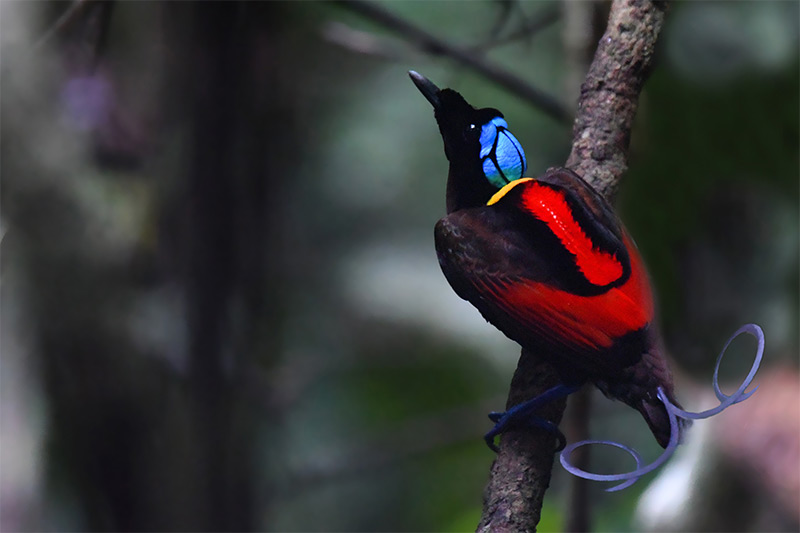
One of my most memorable wildlife encounters during my amazing Rockjumper career must have been in my home country of Ecuador. It was an incredible sighting but also at the same time a fairly dangerous one. “Lachesis”, in ancient Greek mythology, was the 2nd of the three fates: Clotho, Lachesis and Atropos. She was the measurer of the thread spun on Clotho’s spindle, determining the destiny or ‘thread of life’ of each person or being (how long they would have to live). It is not a coincidence that the largest and most notorious pit viper in the world has been named after her: The Bushmaster. Ever since I came to Ecuador, I had heard of this seemingly mythical creature, but even after 12 years of intense birding in tropical forests like the Chocó and Amazonia, I still hadn’t seen one. On the other hand, this was not that surprising, as bushmasters are very rare and low-density reptiles, mostly nocturnally active, and even hard to find by professional herpetologists.
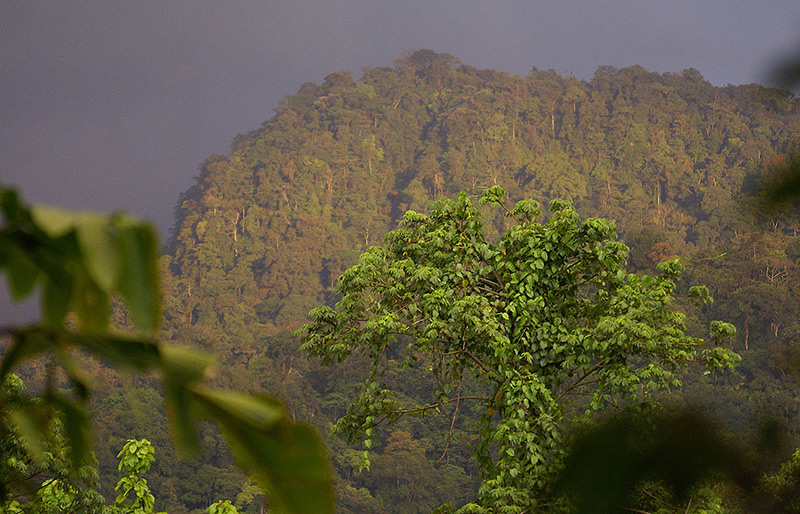
During our Chocó Specialties tour in September of 2018, we visited the Rio Canandé reserve in the remote corners of NW Ecuador. After finishing breakfast, I made the comment “let’s go find jaguars and bushmasters”. As usual, in response to these typical optimistic jokes, I got a lot of happy smiles in return. It was dark and cloudy, and it rained lightly when we started our day hike up the ridge trail. As expected, bird activity was very slow with dripping noise and leaves moving in the forest, as we continued up the trail at a steady paced.
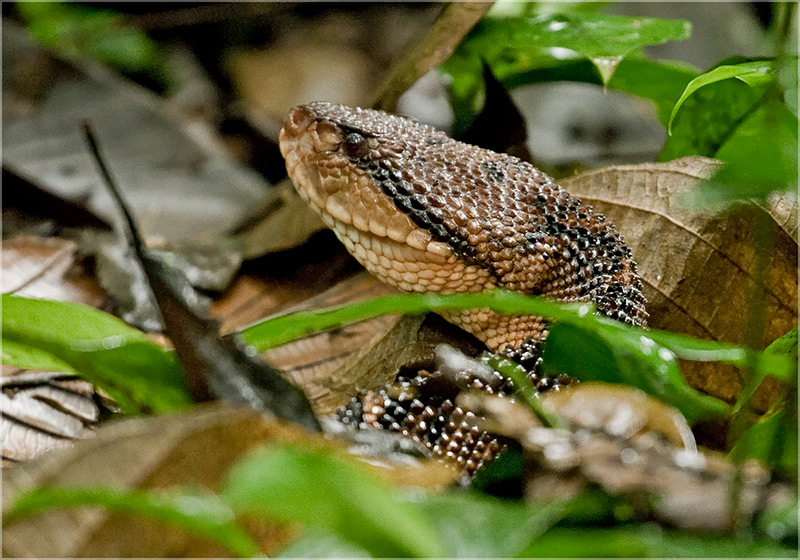
Just after crossing a small stream, I suddenly saw the trail in front of me lift up: in a split second I knew exactly what animal was lying in front of me, and instinctively I jumped back, pushing other members of the group. At the same time, I was calling out the words “bushmaster – bushmaster – bushmaster”, and still most people were not aware of what was going on. Once I got myself and the group back at a reasonably safe distance from the equally spooked and agitated animal, I carefully tried to explain that there was a huge venomous snake lying coiled-up on the trail. Light panic in the group continued and I was still shaking, but everything seemed under control. I told the local ranger who was in the back of the line that there was a “verugosa”, the local name for bushmaster, and at first he did not seem to believe me. Once he got his own eyes on the snake, his first reaction was “mamma mia – that’s the biggest one I’ve ever seen!”. He also mentioned the word “matacaballo”, which means horse-killer.
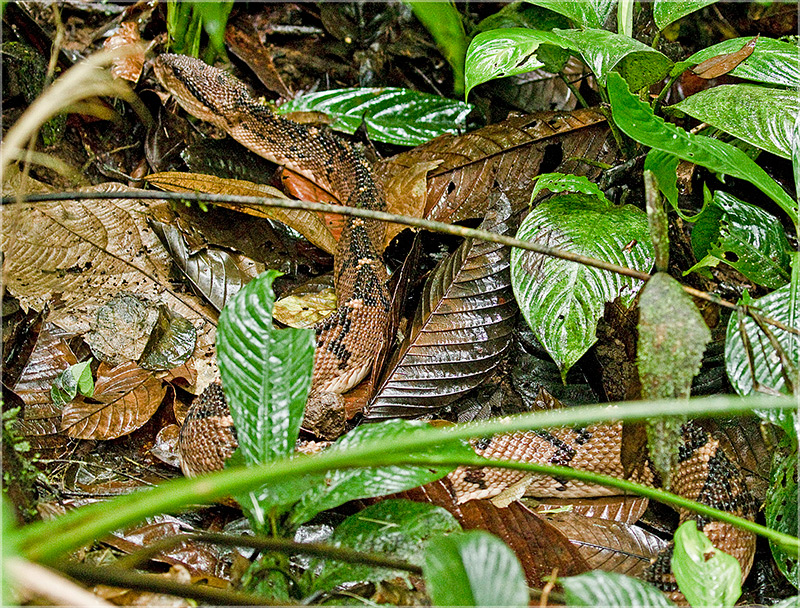
Our exceptional wildlife encounter continued as we watched the massive reptile from a safer distance, taking photographs at the same time. It was an adult Chocoan Bushmaster Lachesis acrochorda. The specimen must have been close to 3m long, with a body almost as thick as a car tire! After a couple of minutes, the bushmaster slowly started to slide away from us and into the understory alongside the trail. It frequently turned its head back, clearly trying to keep an eye on us. It was surprisingly well camouflaged and blended in perfectly with the leaflitter. Its beautiful boa-like pattern and heavy scales were distinct, as well as the head shape – what a beauty! We followed it carefully for a prolonged time to make sure it wouldn’t surprise us on the way back. Eventually, it moved far away from the trail into a steep gully – what an incredible once-in-a-lifetime sighting. Surging with adrenaline, we continued up the trail, many of us still in disbelief over what we had just seen. We slowly picked up the birding again, although it was extra difficult to not constantly watch the forest floor for more snakes!
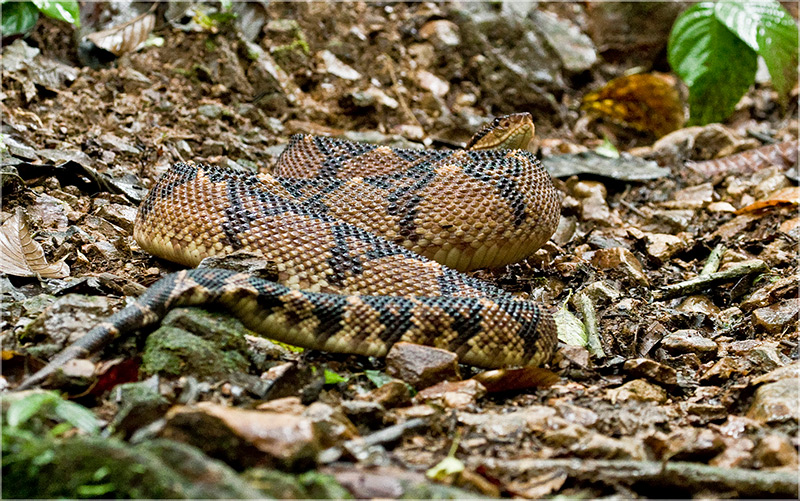
Reflecting on that day trip, I am certainly happy to have experienced what I did! Life can get monotonous at times, and this was one of those moments that offered a new viewpoint.
A pelagic off the coast of Durban, KwaZulu-Natal, South Africa. The prize for the day, the highly desirable Barau’s Petrel.
Our day started early with the wise offering of anti-nausea pills. I looked at Adam Riley, said thanks, and took a hasty sip of water with no thought thereafter as to how important those 2 pills were going to be.
We arrived at the harbour as the sun was breaking over the horizon, drawing a placid sheen upon the water. After meeting up with folks from BirdLife South Africa, we boarded a small 2-deck boat that hosted a dozen of us, and set sail roughly 80-90kms out.
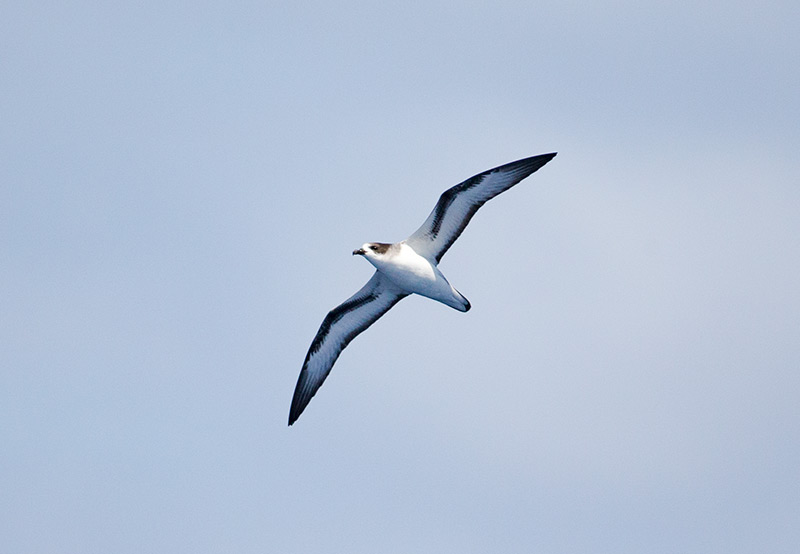
Having grown up in Durban bodyboarding, it was great to head out into the horizon I had always looked out on. It was not long before the calm waters started to change. Still oblivious to how choppy the water would be, I gazed out and was amazed by how much life was lying beyond the shoreline, above water. I am still amazed by that.
Nearing fishing trawlers, we were greeted by vast numbers of albatross. That was a first for me. A hint of birding that I had never seen before. Happily continuing, I sat down peering over the edge of the boat, left with my thoughts, a 360° view of the Indian Ocean and a body slowly starting to protest the constant jarring.
One loses sight of time on the water. My mind slowly wandering, I saw a flash of silver leave the ocean. That was new; and I was suddenly wide awake, watching! Flying fish. A happy sight indeed. To see the schools of fish leave the water and take flight was a wonderful moment. Thereafter, we were greeted by a sailfish and Minke whale. Many new experiences all around, but still no Barau’s Petrel.
Anticipation building on the boat and camera’s being checked for the umpteenth time, we arrived at the coordinates provided.
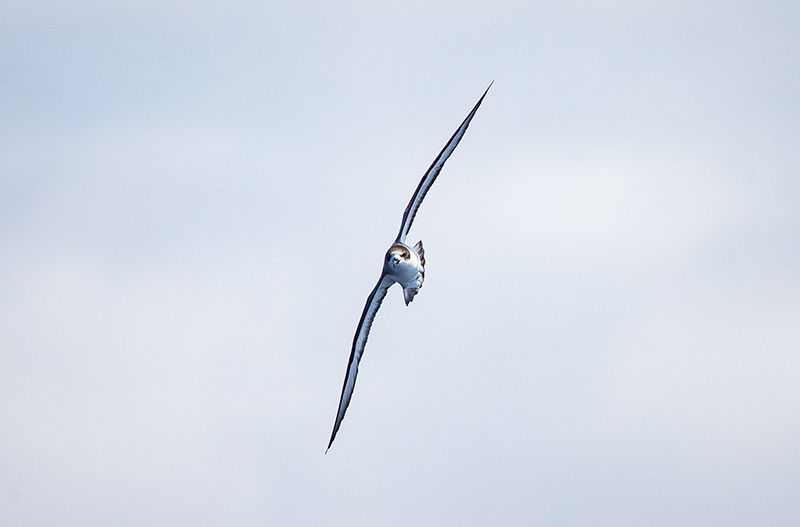
It was not long before the boat erupted with noises that I certainly did not expect. There it was, shutters clicking furiously and a moment of sheer excitement on the faces around me: we found the Barau’s Petrel.
That was my first real introduction to birding and the excitement that came with it. A viewpoint not before experienced and a newfound appreciation for our feathered friends.
On the trip back, we saw a Wandering Albatross way off in the distance. I was told the last confirmed sighting that close to the Durban shoreline was almost a hundred years ago.
It was certainly an adventure that I greatly treasure and reflect on fondly today. There were many firsts on that day for me, and finding a sought-after lifer that not many get the pleasure of seeing that soon into their birding adventures is a real honour.
In 2015, I started my adventures with Rockjumper, fresh out of the hospitality industry on the western edge of Kruger National Park. During my interview with Keith Valentine, I recalled a simple question; “What target do you dream of seeing?”
It was at this point that I began to dream a little and my answers were as followed:
- To see the great migration crossing the Serengeti to the Masai Mara.
- To see Gorillas in Uganda or Rwanda.
- To see Tigers in the wild.
Rather comically, Keith responded, “Greg, you do know this is a birding tour company?” Two years later I received a phone call from Keith: “Greg, there is a trip going to Tanzania to cover Arusha, Lake Manyara, the Ngorongoro Crater and the Serengeti… Are you interested in a visit?”
Needless to say, a month later, I was boarding a plane to Kenya at 1am in Johannesburg. Arriving early in Nairobi, I was fortunate to have a flight to Arusha, which conveniently allowed us to pass the clear summit of Mount Kilimanjaro. The pilot came in over the radio: “Air traffic control has allowed me to view the summit in two Passovers, have your cameras ready.” A brief figure of eight provided fantastic views of the snowy top before we began our descent to Kilimanjaro International Airport.
The first few days were a real blur. (Camping under the stars on the shore of Lake Manyara with a log fire burning, where a pride of jaw-dropping passed by in the early hours of the morning, stopping to play with one of the camp chairs from a nearby tent being a notable exception). Then we pushed on toward the Ngorongoro Crater. As we summited the crater rim, we stopped to take in the view. It was jaw-dropping!! Trying to take in each second, with a pool of emotions ranging from elation to complete awe, left an indelible imprint on my mind. Descending through the crater presented a fantastic sighting with Spotted Hyaena hunting a Buffalo calf and ultimately succeeding.
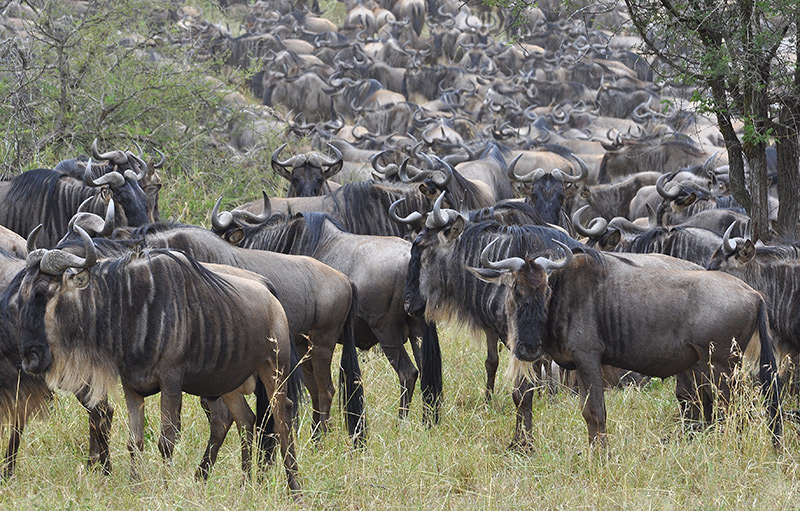
Amazingly, the best was yet to come, as we passed down onto the level plains of the Serengeti. The large expanses of grassland which stretched as far as the eye could see, broken only by the occasional errant Umbrella Thorn, would host the final stretch of our visit. The rains had been falling, and the environment was emerald green, with hosts of birds displaying, yet the large, legendary herds were seemingly absent. A few turns later, we reached what seemed to be an imaginary spot to the casual observer where we turned off-road on approach to our camp. As we rounded a hillside, a few minutes later than expected, having managed to get firmly stuck in the mud, we were not only greeted with an amazing view our green camp but also a swathe of Common Wildebeest and Plains Zebra whose annual migration happened to be passing through our camp.
Having drunk in the scene, we settled into camp, the wildebeest honking as we settled by a fire watching them as they passed by. Throughout the night and without electricity to dull the senses, I listened intently as the herds passed through with hyaena and Lion, betrayed by their roaring and contact calls, in close attendance. The following morning, I settled atop a granite boulder, coffee in hand, watching contentedly as the herds slowly meandered off into the distance.
Even for a tour leader, Rockjumper has managed to make a habit of making dreams come true.
It was through a series of FORTUNATE events that I joined the Rockjumper Family in early 2018, and in the brief period following my entry into the company, my expectations have been far exceeded. So, as I sit here tasked with trying to pick my ‘favorite’ memory thus far, I find it difficult to make a decision considering all that’s happened in the last two years. Let’s face it, most people’s ‘day jobs’ don’t exactly consist of traversing across rope bridges, trekking through rainforests, or setting sail off Africa’s most southern point, all in pursuit of little feathered friends. So, to choose a highlight in what has been a whirlwind adventure is rather impossible. Instead, I will tell you how my first Rockjumper adventure began.
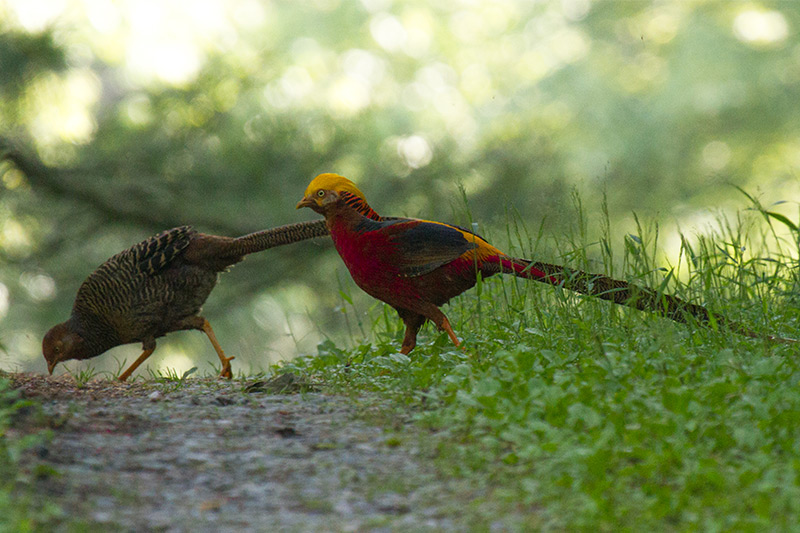
Picture me aboard a flight to Chengdu, the capital of China’s Sichuan province. The entire 20-hour journey has been spent cramming in the ‘all-nighter’ fashion I had all but left behind with my days of being a student. I had never had so little time to prepare for an overseas birding trip and certainly not one of this magnitude. You see, I had been told quite literally one week before that I would be embarking on a training trip to China. No warning. No prior prep. I cringe to think what I looked like when my jaw hit the floor at the news. I had never imagined that China would even remotely be a trip I would tackle so early on – and yet here I was, looping bird calls from this foreign region to try identify them (so much so that I was beginning to hear them in my sleep!).
Luckily, I would be training under Glen Valentine, who proved to be the most incredible mentor, along with a group of wonderfully eager guests, whose enthusiasm helped ease my first-tour nerves.
Amidst an array of prayer flags, vast expanses of snowy planes, and misty mountains echoing with the sounds of the Koklass Pheasant – here, in a seemingly ancient world – we recorded an incredible 305 species.
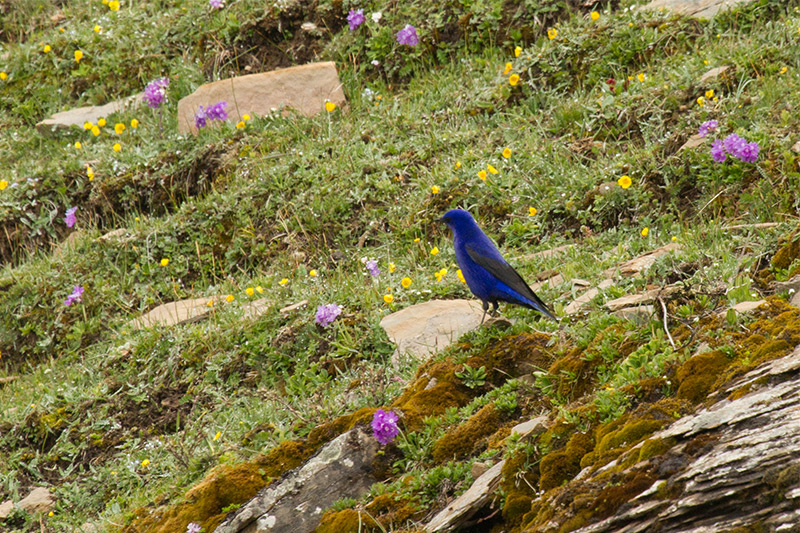
Amongst these, it seems obvious to say the pheasants completely stole the show, especially the exotic Lady Amherst’s and Golden Pheasants; two simply breathtaking species that I had always hoped to ‘one day’ see. To see these species, we cruised quiet roads at twilight catching the birds feeding in the open; just one of a few novel birding techniques that I’ve been exposed to since joining Rockjumper.
Eurasian Bittern, a near-mythical species back at home, was also seen incredibly well while braving my first ever snowstorm on the Tibetan Plateau; seeing this massive bird lift from beside the boardwalk and fly slowly away from us is something that is still so clearly etched into my memory.
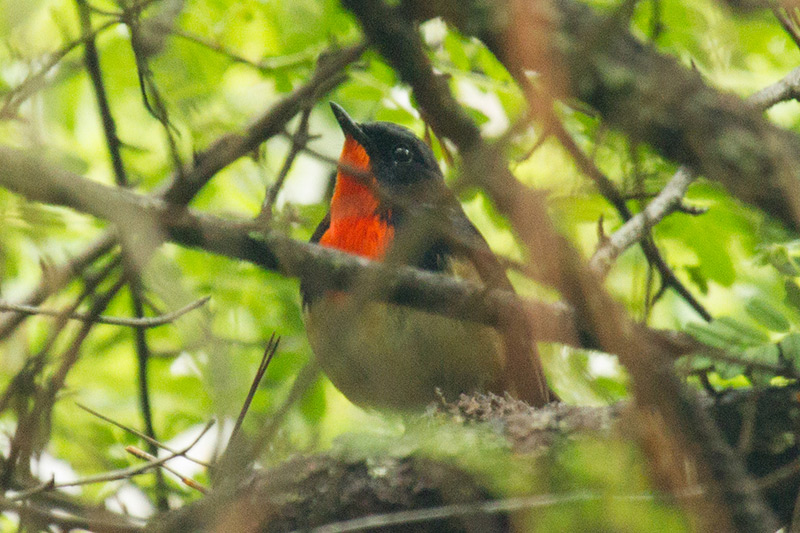
Other highlights on the tour included an impressive list of nine parrotbills, fourteen laughingthrushes, eleven rosefinches, the indescribable Firethroat and Grandala, and a third of all of China’s endemic birds – one could say a casual day at the office here at Rockjumper.
But, something I had never truly considered was the interesting mammals you encounter on such adventures. The most wondrous example of this came on a windy evening atop the Tibetan Plateau – where across a grassy field I spotted the mythical Chinese Mountain Cat; one of the least-known Felids in the world!
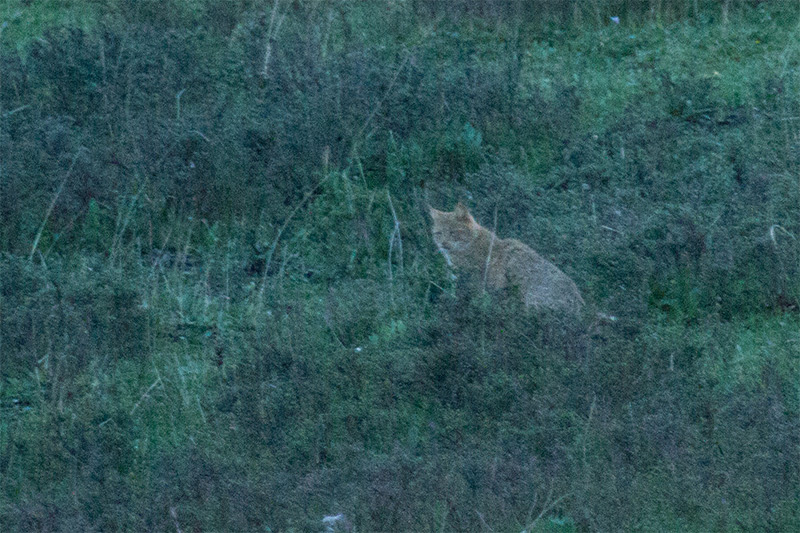
This baptism of fire has only been beneficial in preparing me for the rest of my Rockjumper journey, as I’ve found myself visiting more countries in a year than I had visited in my entire life before; including trips to Uganda, Zambia, Namibia, Botswana, the Seychelles, Ghana, Comoros, Reunion, Mauritius and Rodrigues, Lesotho, and Madagascar. Since joining Rockjumper, my day job has become a constant adventure, and I look forward to many more trips into the unknown.
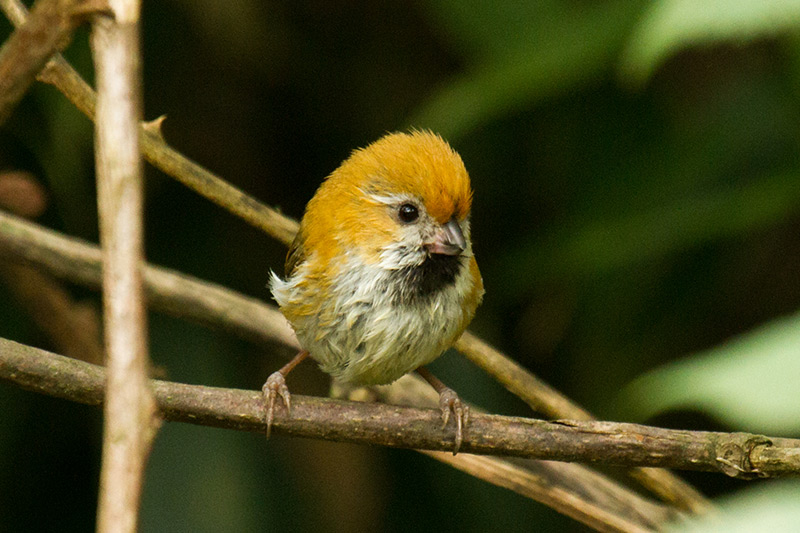
On Day One, we were spoiled rotten. Right out of the gate, literally, ten minutes after we set out we came upon an actively hunting group of wild dogs. It was spine-tingling. Truly, thrilling.
We left the lodge soon after sunrise. There were ten of us in the jeep. My mom and dad were riding in the seats in front of me. I was perched at the rear of the vehicle, where I could view things from a slightly elevated seat and still help folks towards the back get onto birds. Up front, riding shotgun was our guide; a guy by the name of Adam Riley.
That first day in Kruger National Park was one I’ll never forget. While my dad and I had done a number of trips together, this was my first time traveling with my mom. She celebrated her 70th birthday while we were in Cape Town – that leg of the trip had been spectacular in its own right. We were all here for the American Birding Association’s South Africa Safari. It was October of 2014, and this was the first safari event in a series that Rockjumper and the ABA now partner together on annually. In South Africa we had 100 participants, which sounds like a lot, but field trips were in groups of 10, and each evening we would all amass in a party-like atmosphere, with everyone gathering for meals, drinks and to recount the day’s events. And there was always a lot to share.
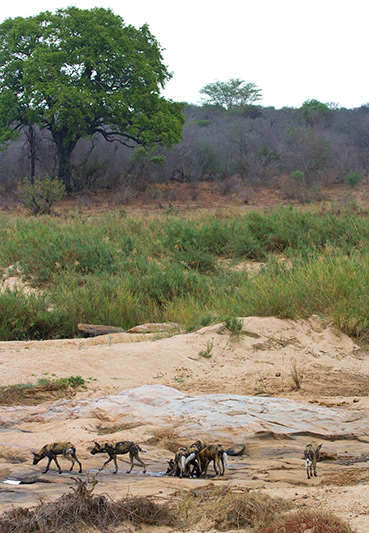
The first leg of the trip was in Cape Town, and it lived up to the hype. An absurdly gorgeous city, it was (and remains) magnificently biodiverse, with fabulous birding all around. The cliffs, coast and fynbos habitat provided sightings of Cape Rockjumper and Cape Sugarbird. West Coast National Park offered elegant Black Harriers deftly navigating the airspace, while one had to watch the roads for crossing Leopard Tortoises and fat, cranky Puff Adders. Of course, Kirstenbosch and Table Mountain were wonderful to explore, and the African Penguins along the coast were at the same time so comical and proud. Yet, I think all of us could not help but look ahead to our time in Kruger National Park. Because, when you know that elephants, zebras, giraffes, leopards, and lions lurk around the corner, it’s hard not to think about them.
So, it was not without a little anticipation that we headed out on that first morning in Kruger. The pack of wild dogs was an incredible bonus. One needs such luck to encounter these rare, beautiful and voracious predators, and here we were just 10 minutes into Day One with seven of them loping around, drinking at puddles, and sniffing the air. They never once looked at us. It was as though we didn’t exist. For both us and the dogs, we seemed suspended in an invisible bubble, both completely apart from what was happening, but still also right there. Present. If I’m being honest, I did not realize just how lucky we were to see the wild dogs, nor how sought-after they are among park visitors. Nor did I have any idea ‘til I saw them just how captivating they are. My mind was on lions. And soon my eyes were as well.
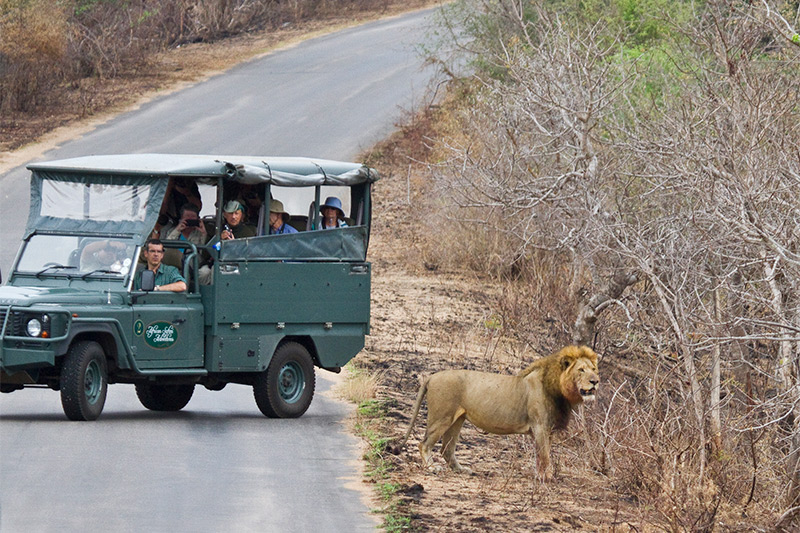
We left the dogs to their business, and a few minutes later our jeep rounded a bend in the road. As we did, Adam turned from the front seat back to us, and called out that there could be lions just ahead, and advised we stay alert. That was all he needed to say. We were on pins and needles. We drove a little further and then the jeep slowed to a stop. Off to one side there was movement, perhaps 50 paces back in the bushveld habitat here. Something was stirring. Something big was moving within the high grasses and amid the small trees that covered the dry, dusty, rocky soil. The driver cut the engine, and a few interminable minutes ticked on. We all sensed it. Surely something was here, but the only thing sure right now was that we were not seeing anything. We waited and watched, and then someone broke the silence, in not quite a whisper. “It’s on the road.”
Frozen rigid, not quite facing us, it stood about 150 feet away. It looked more like a mounted specimen, as though it had been set up and standing there for decades, perhaps centuries. But then it turned its head slightly towards our jeep, and began walking a direct line at us. No one spoke. We knew we had nothing to fear and had been informed we were completely secure inside our jeep, but the hairs on the back of my neck were also telling me something. The big cat was still approaching at pace. It was only getting closer, and as it came into focus and the light improved, we could see it was a good-sized male with a nice shaggy mane, mostly blackish at the base. But there was something else the light showed, and as it continued to walk its line, we could see the front of the animal was awash in red. He’d been feeding. The fur around his face and front legs were spattered with blood, and looking closer you could see he had a very full belly. Keeping his line, he kept walking towards us until he was just beside us, and easily within arm’s reach of the jeep. As he passed beneath the side of the vehicle, just inches away, I saw my mother in her seat ahead of me, draw her arm inside the vehicle. The cat was so close that Mom’s instincts dictated she’d best not extend any unnecessary offerings to this animal, full as his belly might be.
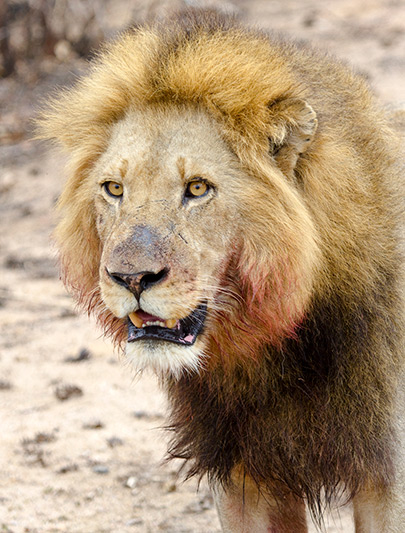
The lion continued, and seemed headed for a napping place. He stopped at one point, turning slightly, frozen again, sensing something but his golden eyes betraying nothing. And then he melted back into the bushveld. This was not the last one we saw that day. In fact, we saw lions every day in Kruger. But it was my first; my lifer lion, if you will. And not one I shall forget. It was the one we saw right after the wild dogs, but before the magnificent elephant that was showering itself with muddy water. It was the lion we saw just an hour before we saw the Verreaux’s Eagle-Owls at a nest. The one before we were startled by a pair of Bateleur bathing and drinking at a puddle. It was the lion about two hours before those Southern Ground Hornbills strolled past, batting their lashes. And it was the morning before the afternoon when we found that female Cheetah, minding its two youngsters in the shade of a lonely tree. It was that lion.
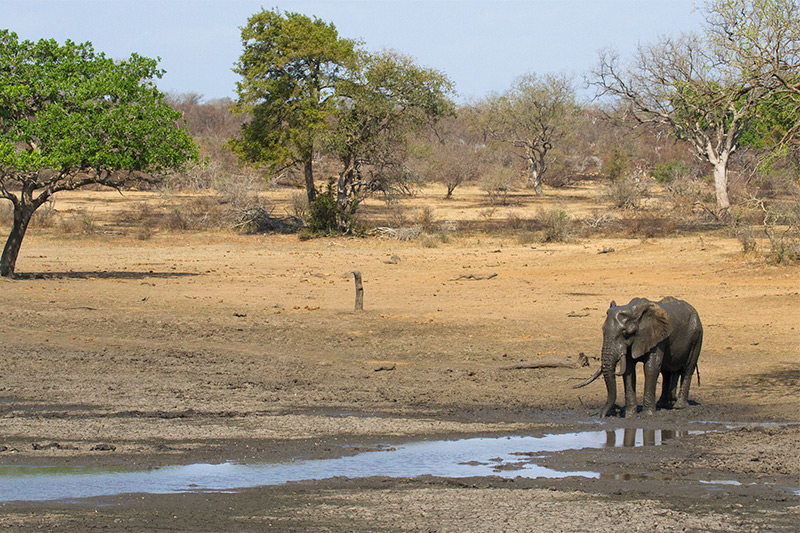
We drove on only a little further and found a lioness picking upon the remains of a warthog, and then knew the first half of the story. That was my first real Rockjumper moment. My first real Rockjumper day. And that was a few years ago now.
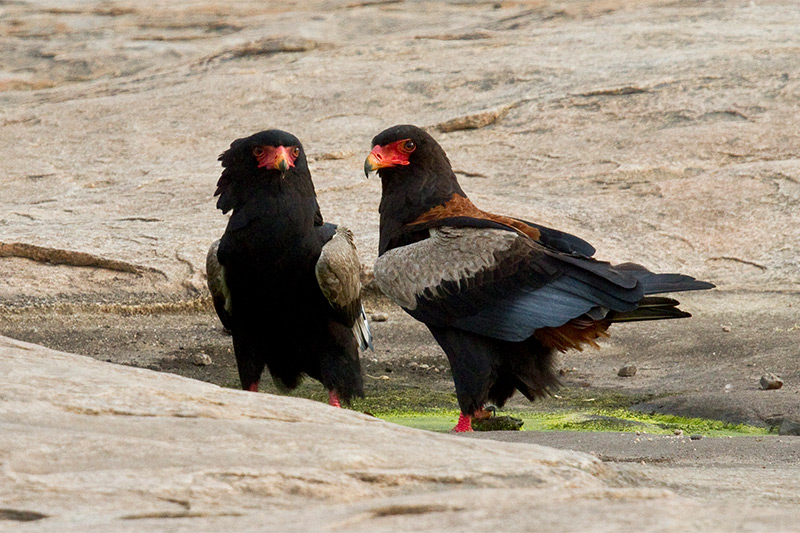
I joined the Rockjumper family in 2009, and after a couple of years on the Travel Desk, I moved on to work in the Operations (Ops) Department, where I’ve been ever since. The Ops division is primarily where tours are set up and the logistical side is fleshed-out and planned. On a typical day at my desk, my faithful computer and I can visit Papua New Guinea, Remote West Papua, Canada and then head over to India and Sri Lanka – often all in the space of 30 minutes. It truly is like multi-tasking on steroids! Truth be told, though: this is how it is for the entire office team, and I’m always inspired by the dedication and attention to detail that’s taken by each and every person to ensure that all tours go according to plan. No effort is spared to make sure clients are happy and have the best possible experience. We all love hearing that guests had a successful tour and got a few more lifers for their ever-growing bird lists – this makes everything so worthwhile.
Every now and then, one of the team gets to visit one of our destinations but, generally, most are not so fortunate. Because of this, we’re a hungry bunch, always digging for information and advice to help us best understand the destination so that we can provide the services our guests expect from us. Fortunately, our faithful management team, valued suppliers and expert Tour Leaders are always available to give input, and this is a small window into how the daily wheel turns to make sure things happen as they should.
Luckily, I been one of the fortunate ones to have an opportunity to participate on a tour, and the experience turned out to be one of the highlights of my time at Rockjumper – and indeed my life! It was back in 2014 when an educational tour to Ethiopia came up which was aimed at checking out some of the facilities and areas we visit. I enjoy travelling to new and exciting places, but I can honestly say that Ethiopia was not on my bucket list. I was soon to learn that it should have been!
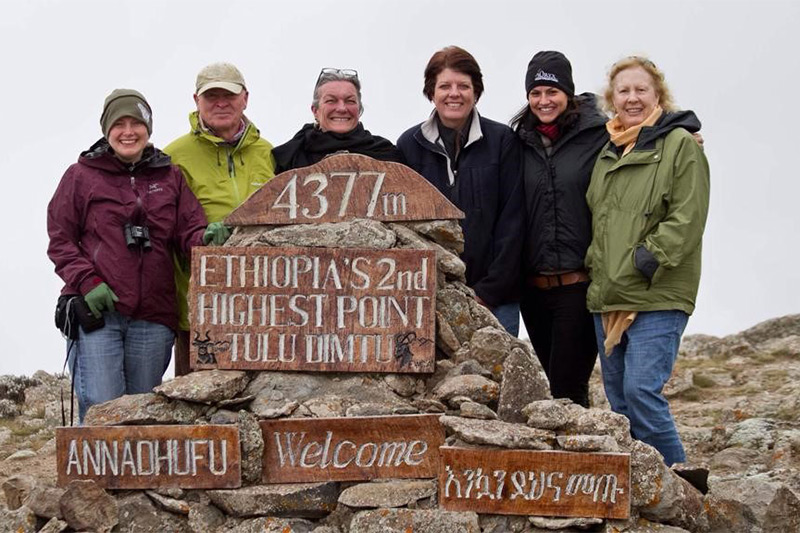
My trusted friend and colleague, Kirsty Horne (now Nolan), and I decided to take this opportunity, and we headed for Addis Ababa and the start of our Ethiopian adventure.
Our trip was to take us on a journey covering about 3,000 kms in 10 days – around the Southern regions from the Capital City of Addis Ababa to Langano, the Bale Mountain National Park, Sanetti Plateau, Goba and Awassa, Arba Minch and the Omo Valley regions. Sadly, we didn’t make it up to Lalibela – but that’s for another time – and is now on the bucket list! Kirsty, being a super talented photographer, diligently documented our journey so most of the photos here are thanks to her.
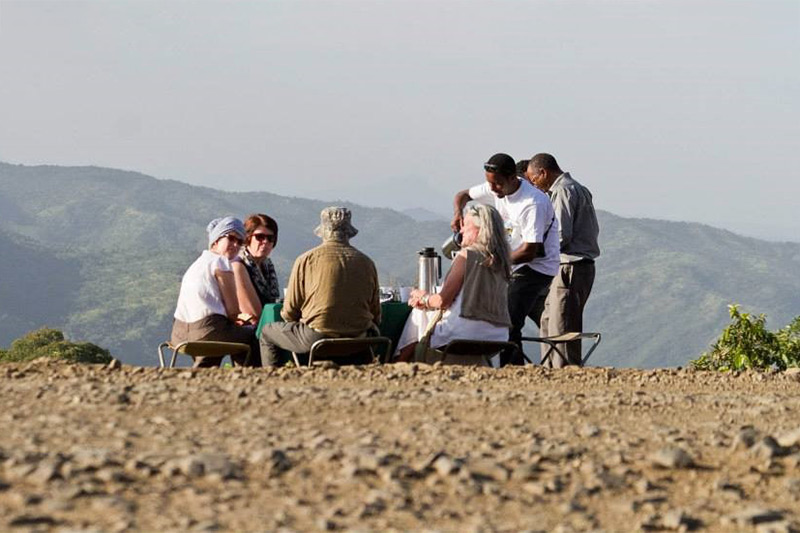
Thankfully, our trusted driver was waiting for us as planned when we arrived at Addis. Although expected, it was a great relief to see him, and I immediately realized how important this first act is, especially for our guests who arrive full of faith knowing that as they step into the arrival hall after a long flight, they will be met as we were with great enthusiasm and without delay. We were promptly briefed about what would happen over the next few days as we were being transferred to our hotel. A great start to the tour indeed, but admittedly the transfer was one of the most enthralling rides I’ve ever had! Talk about a WOW experience! I didn’t realize at the time that I’d learn to relax and enjoy the time on the road – but, thankfully, I did, and by the time the tour was over I was oblivious to the sheer speed and agility as our driver negotiated the prolific volumes of traffic. Not long after my trip, I saw this post on Facebook which is a prime example of traffic in Addis, and it certainly bought a smile to my face – Addis Traffic
Since we were to cover a lot of miles in a short space of time, we spent a lot of time in vehicles. The road infrastructure varied from really good to not so good! No matter where you go in Ethiopia there are lots of people, donkeys, goats and other livestock using the roads. Fortunately, most of these precious beasts seem to be traffic-wise and it’s something to behold to experience the twisting and turning as the drivers dodge animals, people and other modes of transport at high speed!

Having never travelled with a group of “unknown companions” before – I was a tad apprehensive, but within minutes of meeting our intrepid teammates, I knew without doubt that we would have a trip to be remembered and that we would all keep in touch. We all knew that Ethiopia comprises some VERY remote places, but since the trip was organized by a highly reputable local ground operator, we were confident that things would run smoothly – and that they did.
Every aspect of the trip was fascinating, from the people and their gentle natures and amazing cultures to the food and general way of life. But, most importantly for me as an “Ops” person, it gave me tremendous insight into what happens from the start to the end of a tour and what our guests experience. From the moment you arrive at the airport and experience a happy welcome for your hotel transfer to the taste of your first meal, to the moment you first absorb the ambience of your accommodation, to the way the tour leader and local drivers bend over backwards to ensure that everything runs smoothly and without hitch. It is truly a wonderful experience and more than I ever expected. The tour leaders made sure any little issue was resolved with the least possible inconvenience, and absolutely nothing was too much effort. One of our members had to leave early due to health reasons and despite the fact that we were in an extremely remote location at the time, our guide made a plan and she was soon flown out and sent on her way home to the States. Every detail was considered, from monitoring that meals were up to par, to making sure everyone was comfortable on the long drives with regular stops. For me, these were the biggest things I took away from the trip. It gave me an incredible insight into what a tour is like for our clients and how vitally important all the little details of planning are and of course, how awesome and dedicated our tour leaders are as they strive to ensure that everything is safely taken care of for everyone on the tour. I definitely developed a new-found respect for the work they do and am proud to work with such a great team.
And lastly – had I known then what I know now, Ethiopia would definitely have been right up there at the top of my bucket list. It is truly an amazing destination, and one that fills the senses in every way possible.
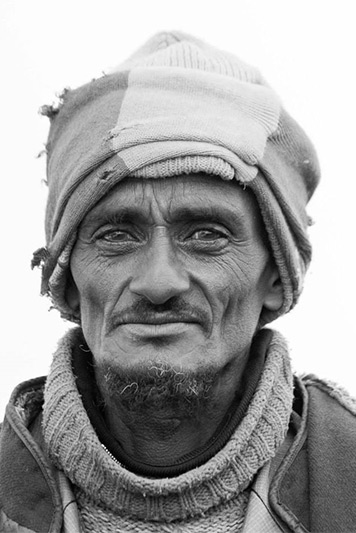
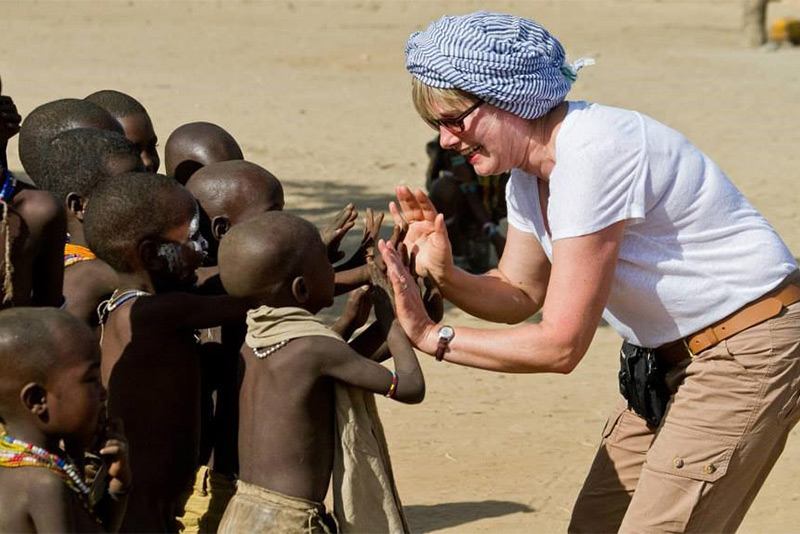
I hopped onto the Rockjumper bus to join this journey some 5 and a half years ago now. Thus far I have met some extremely interesting characters and personalities throughout our organisation. Rockjumper is responsible for the most dramatic change in perspective on how my family view this beautiful country of ours.
And so my story goes…
Holiday time with my wife, Sudira, and son, Nirav, was always about the sun and the beach, and that was how all our vacations had been planned, even our international getaways. I was fortunate enough to join the company just before a staff trip to Zebra Hills, which provided by far the biggest variety of birds and game I had seen in one place, ever. On my return home, I relayed many of my experiences and showed off some of my very amateurish-quality photos. Nothing much was ever said thereafter and that was that. Or so I thought!
When the opportunity to visit Zebra Hills came up again a few years later, I was taken aback by Nirav’s eagerness to go on this exciting adventure. We met no resistance from the lady of the house either. Most relieving for Nirav was that there was not much waiting time given that this opportunity cropped up at short notice. Nirav kept recalling some of the stories I had shared after my first trip and it was amazing to see how much he remembered.
On the game reserve itself, we experienced creatures small and the king of the jungle too, all on the same afternoon drive.
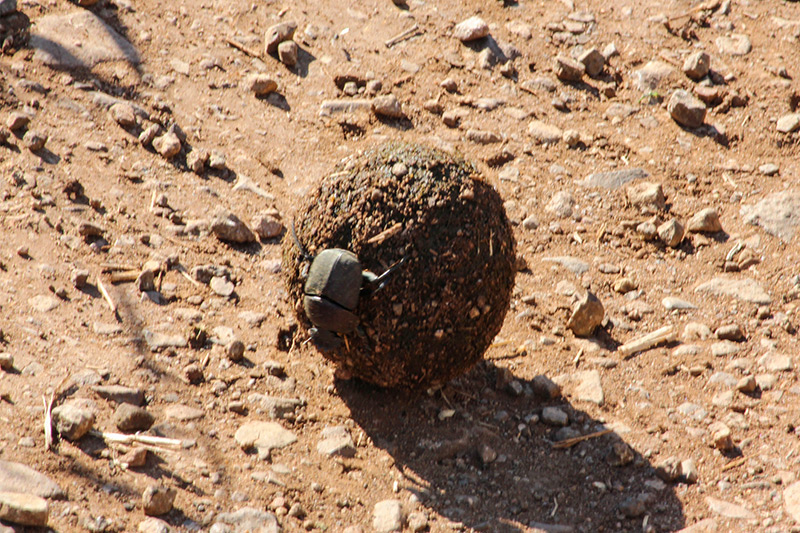
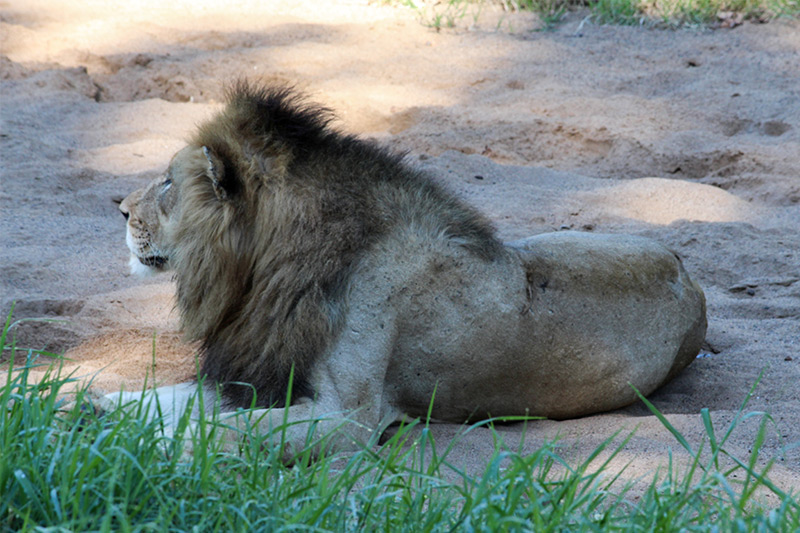
Of course, there were the bird species to marvel over as well, from small colourful ones to raptors of all kinds.
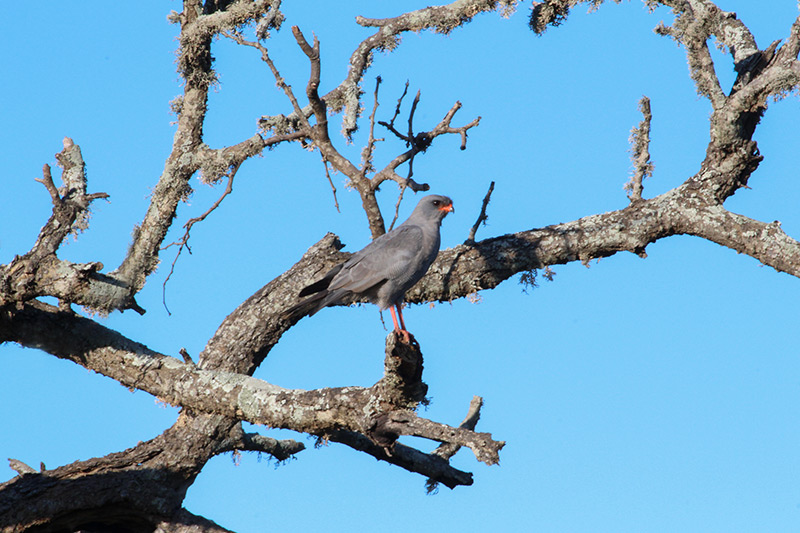
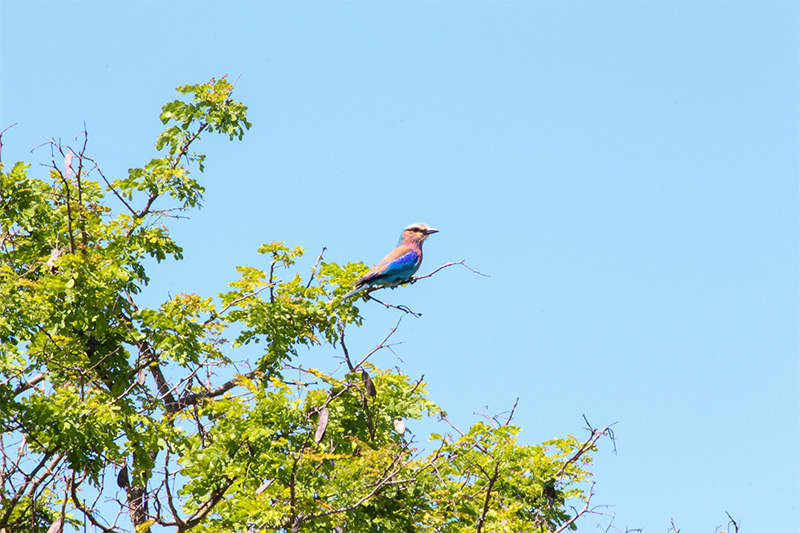
The 2 highlights of the trip were the sighting of month-old cheetah cubs and a roaring lion in the dead of night.
And as all good things must come to end, there was no hiding the disappointment on this little chap’s face.
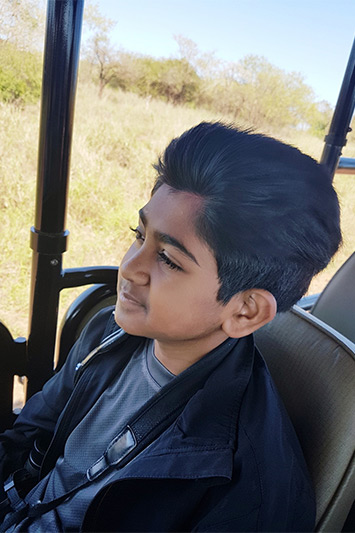
Like many of you can attest to, all it takes is one little Rockjumper experience and there is no going back.
For my story, I thought I would let you all know about my favourite destination to guide in: Papua New Guinea (PNG).
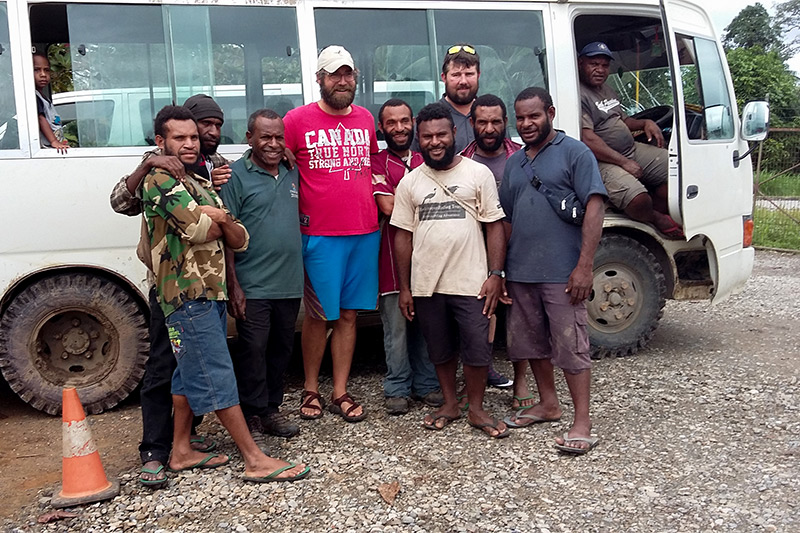
Since 2017, I have been fortunate to lead and co-lead several tours in PNG. 5 of them have been co-led with the great Adam Walleyn, who has taught me a great deal during our time together.
Over these three years, I have been lucky to see a good portion of PNG by now, whether by plane, boat, coaster buss, or bumpy rides in a Land Cruiser. I especially enjoyed one flight in 2018, where we took a small private plane from Tari to Mt Hagen. During the flight, we flew right over Mt Giluwe – PNG’s second-highest mountain – it was stunning.
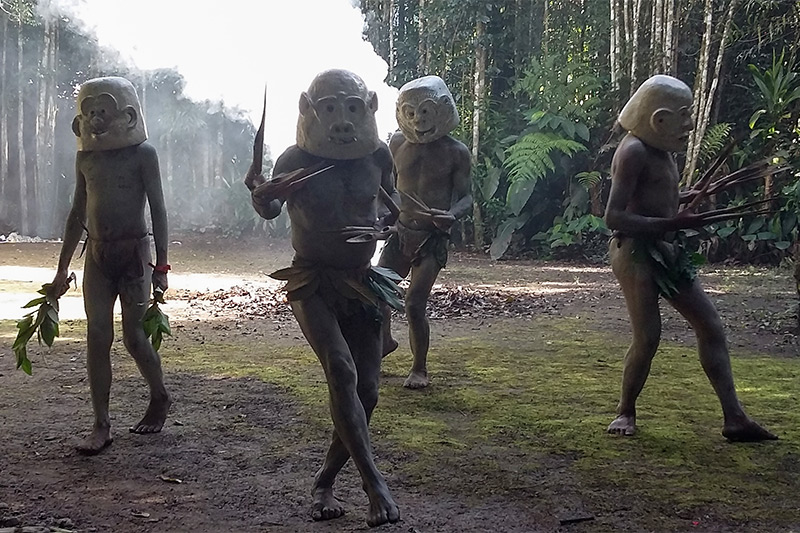
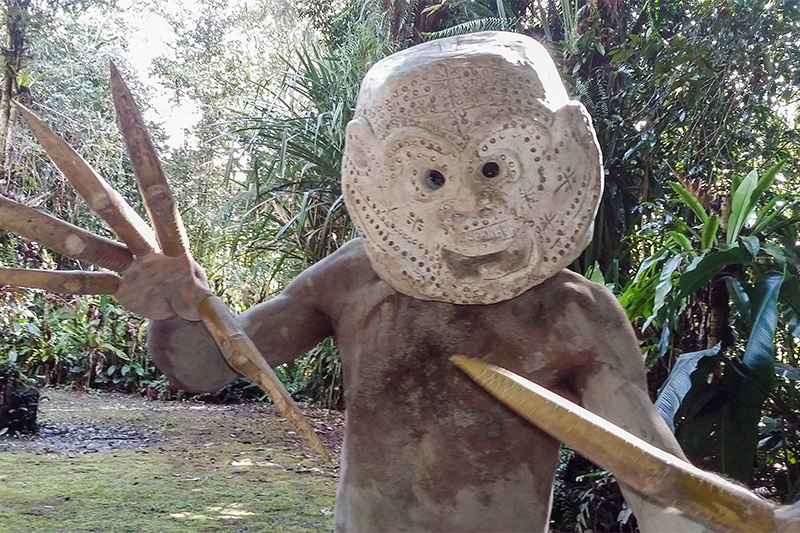
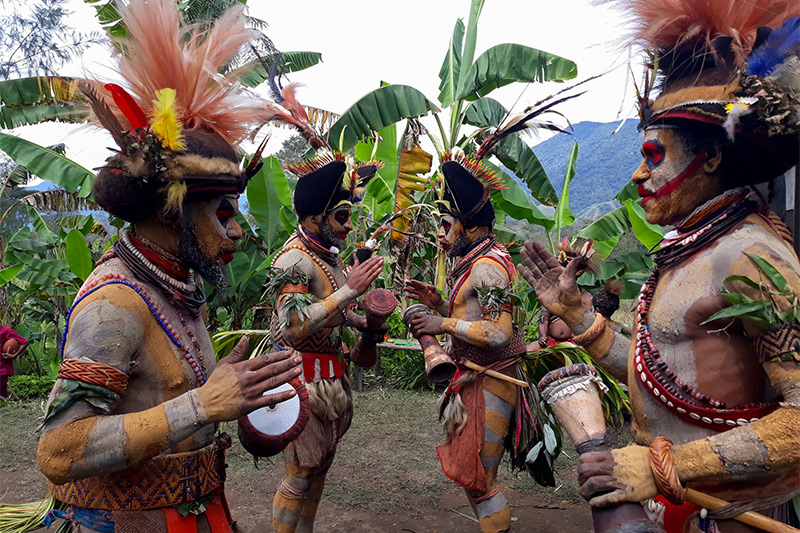
The birdlife here needs no introduction, it’s amazing, but the people of PNG can be just as fascinating. I’ve thoroughly enjoyed the shows put on by the Asaro Mudmen and Huli Wigmen, fascinated by their large masks, colourful face paint and well-decorated wigs. I have also been very lucky to work with excellent local bird guides and be taken care of by some very friendly hotel staff. Without these people these tours would never be as successful as they already are.
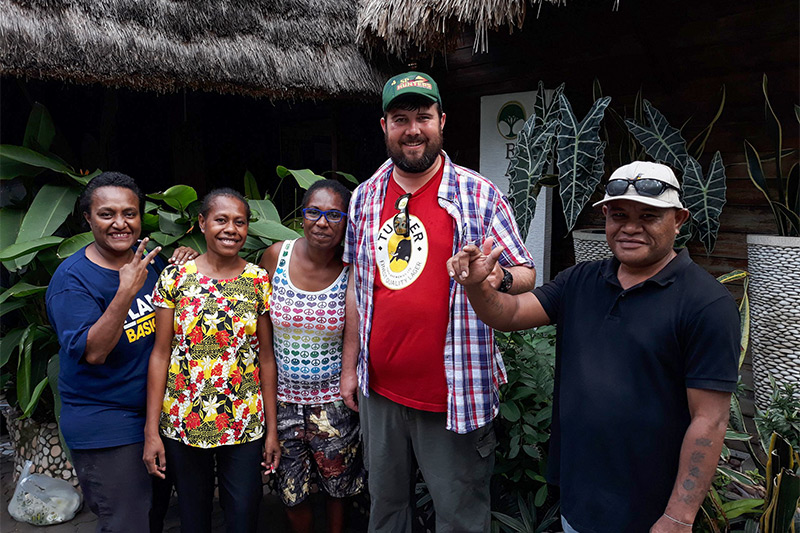
I can safely say that I have made many friends in PNG, and that I am very excited to go back next year.
During my interview with Adam Riley, for an exciting opportunity to join Rockjumper’s Finance Department, the only question I remember asking him was, “Almost everyone in your Team has a background in finance, does nobody enjoy working in your finance department?”. We ran through the list I had noticed on the Team’s web profiles, of names with experience or a qualification in some form of accounting, including Adam himself! I remember Adam laughing, and telling me I’d have to stay in finance forever if he hired me… I promised, I loved working with numbers more than anything!
Fast forward to 5 years later, having found that numbers are not nearly as much fun, interesting or challenging as people, by several miracles Adam pardoned me of my life sentence, and I now head up Human Resources for Rockjumper.
Happy 21st Birthday to Rockjumper! For my story I thought I’d share 10 things you didn’t know about our office Team:
1) They love chocolate cake! My birthday was 11 days BEFORE I joined the Rockjumper Team, but I still had to bring them cake to celebrate. Not just any cake either, it HAD to be chocolate cake!
2) They are fitness-freaks. there is a gym next door to our Hilton office, where everyone subjects themselves to a personal torturer (AKA trainer) during their lunchtime 2-3 times per week. Our remote Team also attend various gym, fitness and swimming classes.
3) They are Google Pros, and will research anything and everything. From exchange rates to new places to travel, from flight routes and taxonomy updates to the more random World Donkey Population Reports and the next office practical joke.
4) They strive to be experts. Nothing is done until we have mastered it, automated it to perfection and found our next area to focus on.
5) They are planning ninjas. Even with digital diaries linked between us, we still meet daily to discuss our priorities so that our planning, bookings, marketing and client needs are always taken care of.
6) They are creative. In addition to our phenomenal marketing team, we have a number of artists, creative and very resourceful problem solvers.
7) They talk a lot, and they argue, it can be chaos, they can be maniacs. They can also be alarmingly quiet when they are focused on the task at hand. Communication is key, and something we all aim to be experts at.
8) They are Team Players. While this may seem self-explanatory, our Team takes it to the extreme. My absolute favourite photo of our Team is the one I’ve included with this story. The lady who keeps our office clean, Thandazo, was away from work on the day the picture was taken, and rather than letting her come back to a pile of dirty dishes, our Team rolled up their sleeves and started a production line while they waited for the kettle to boil.
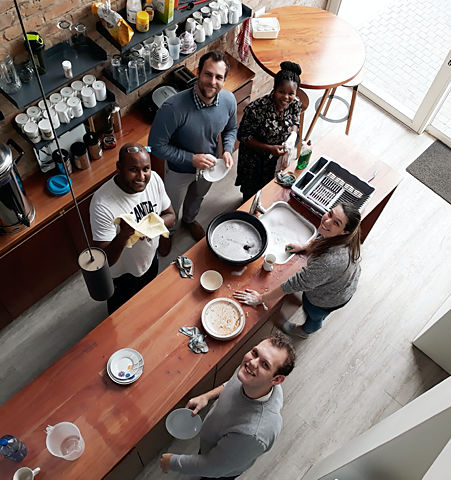
9) They have the best Leaders. With diverse knowledge and backgrounds, and based across the world, our Management Team have every aspect of Rockjumper covered. They are hands-on, positive role models and everyday heroes.
10) They love what they do. Watching them bring passion to every tour arrangement, guest interaction, strategic meeting, e-mail campaign and, most of all, to each other… Is why I love people more than numbers!
Working for Rockjumper has had its challenges. I love a good challenge! Being responsible for creating the majority of our New World Itineraries has been a point of pride for me. So, when Adam Riley came to me with the challenge to create an itinerary that would net more than 1,000 species in less than a month, I excitedly accepted the challenge knowing that Colombia could undoubtedly do the trick! After months of researching and planning, the first Colombia MEGA was fully developed, and I was elated to see what the result would be. We had crossed every “t” and dotted every “i” by the time I found myself with 8 eager world birders looking to make a mark and score an obscene amount of lifers with me in Colombia. Therefore, you can imagine my surprise when I received a panicked phone call from our agent.
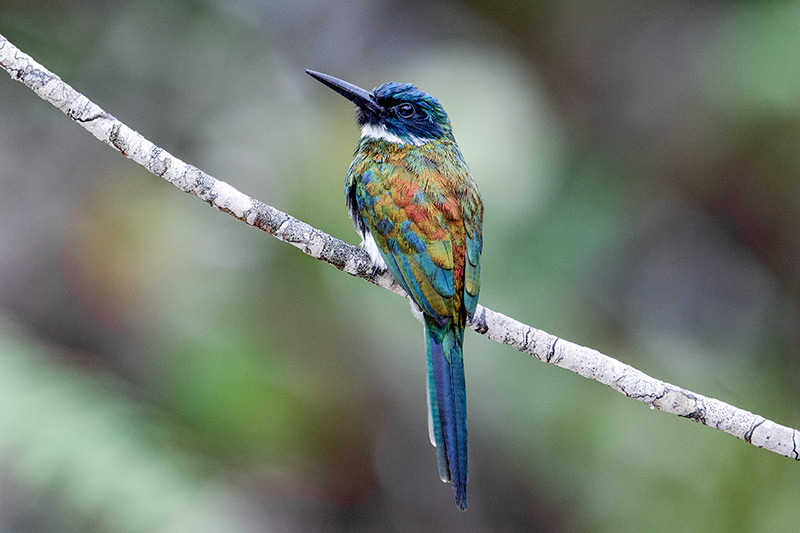
2 days before we were to fly to Mitu, Colombia, near the Brazilian border (for the Guianan/Amazonian portion of our tour) we found out that the airline had “lost” our reservation. Only one airline flies passengers to Mitu, and that airline is famous for “losing” reservations somehow. Just no record of the reservation whatsoever! And Mitu is incredibly remote. The only two ways to arrive are by air, or by boat. The only airline that flew there had resold our seats to somebody. If we didn’t make it to Mitu, where we stood to see some 300+ species, there wasn’t the smallest hope of making it to 1,000! For a fleeting moment, I thought that we were completely sunk. Then I received another phone call.
An operator/friend of mine told me about supply flights from Villavicencio. Villavicencio lies but a 3.5-4 hour drive from Bogota. I thought, perhaps, this was an avenue, and allowed a glimmer hope to creep back into my mind. After a few phone calls and a bit of persuasion, about 16 hours before we had to fly, we had found a way through. We were off to Villavicencio to stay the night, and hope for the best.
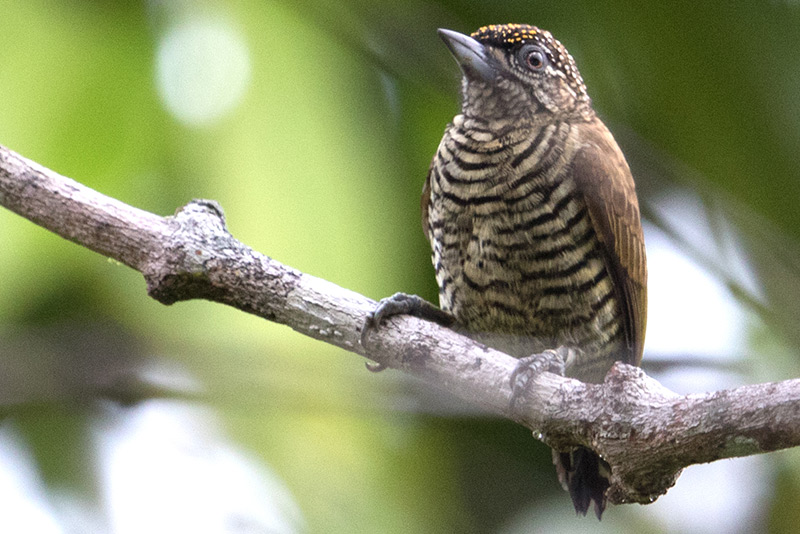
The morning of our flight to Mitu was spent enjoying a bit of light birding around Villavicencio while we waited for word on whether we really were a Go. We were tense, when the call came through that we needed to speed over to the cargo area ASAP. We pulled in and piled out. We lined up to get our bags weighed. We lined up to get our backpacks weighed. Turns out, we had also lined up to get ourselves weighed! Then we were rushed out onto the tarmac, where the only plane in sight was an old DC-3 adorned in dents, scratches, and its original World War II decals. I noted an unrivalled diversity in facial expressions when I looked around the group as we walked towards this work-worn, seemingly-ancient, vessel that was to deliver us to the promised land… which hopefully meant Mitu, rather than the afterlife.
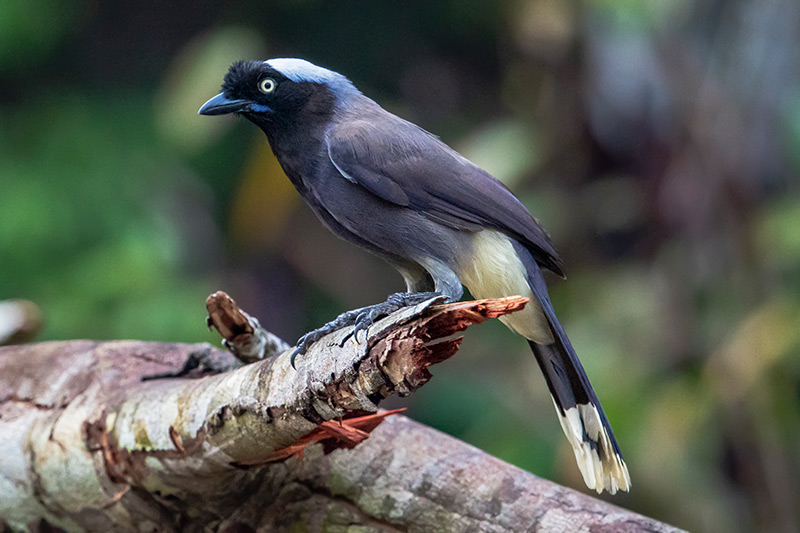
Two hours later we arrived safely to Mitu, after enjoying what was the most memorable flight of my life to-date. Seats bolted into the cargo hold, boxes of cargo everywhere, and a small plastic bag of sweet corn tamales were the scene. Flying low and slow, over hundreds of miles of pristine rainforest, enjoying our tamales, faces glued to little round windows, as the loud hum of the engines droned on. It was fantastic! We landed energized and excited. We saw over 350 species in our 4 days in Mitu, which propelled the group to log 1,025 species during the month-long tour. It was a situation, a flight, and a tour, I’ll always look back on fondly.
At this point, we were a well-oiled team, veterans of New Guinean birding, and ready to track through swamps and tangles to find some of the rarest birds on the island. We had spent three late evenings and one very early morning on Biak Island to secure views of a reluctant Biak Scops Owl. Then, the deep mud and steep trails in the Snow Mountains didn’t stop us from finding Greater Ground Robin and MacGregor’s Honeyeater, although we occasionally had to help each other extract stuck boots from the mud. We also set out across the moor along the shore of Lake Habbema to get close-up views of Salvadori’s Teal, and herded a covey of Snow Mountain Quail for all to see.
Yet, we knew the humid and sometimes buggy lowland rainforest around Nimbokrang could test our resolve and patience. Surprisingly, the famous birds-of-paradise had been relatively easy to see, with males of several species visiting regular display sites, but some of the forest interior species required more determined efforts. We had spent an early morning chasing after the mythical Shovel-billed Kookaburra only to have the bird fly within two meters of us, attempt to land on a palm frond in full view before its perch gave way underneath its massive bulk. Later the same day, we trekked for a few hours through hilly rainforest, climbing into steep ravines, balancing on fallen logs, and breaking trail through dense tangles. We saw plenty of excellent species, but not the hoped-for Victoria Crowned Pigeon. A day later, we all caught up with scope views of the one-of-a-kind kookaburra with a shovel for a bill and added an array of skulking species, including the retiring Collared Brushturkey, but the world’s largest pigeon was still evasive.
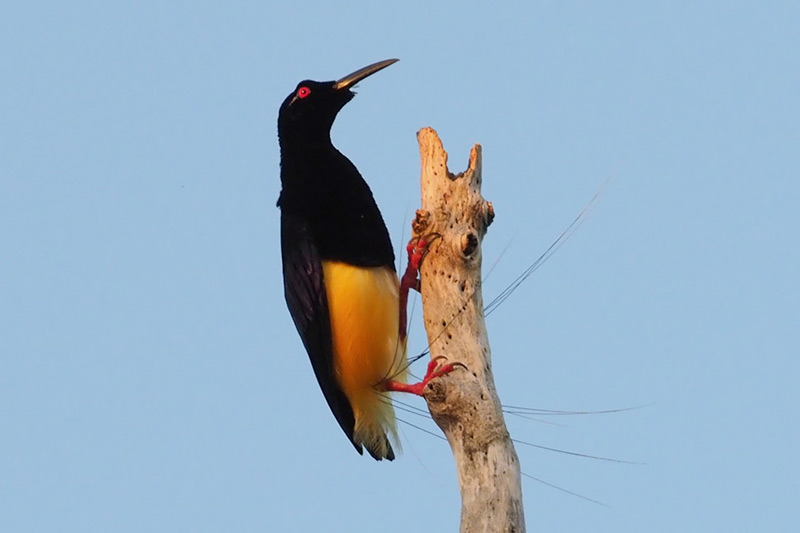
After another late evening, successfully tracking down the uncommon Papuan Nightjar, we all slept well, ready for another try at the pigeon the following morning. We began the day along an abandoned logging road called Jalan Korea. The birding was relatively easy from the open road with manucodes and doves perching in full view and some kingfishers along the river. But we knew that in order to find some of the scarce forest interior species, we had to plunge back into the dense and sometimes gloomy forest. By eight o’clock, we followed the advice of the local guides and started down a faint trail through grassy secondary growth full of palm thickets and saplings. Eventually, the trail reached the edge of pristine forest and then disappeared as we entered the shade of tall trees and muddy ground, we had reached the alluvial swamp forest. We continued crossing the trackless forest.
Foremost on our minds was the massive Victoria Crowned Pigeon, a species that is becoming very rare near human settlements due to hunting and habitat loss. The Victoria Crowned Pigeon is one of four species in the genus Goura, all endemic to New Guinea and representing the largest extant pigeons in the world. Not only are these unique birds seldom seen, but also beautiful with blue-grey and maroon plumage and a head decorated with an elegant lace-like crest that is tipped with white in the Victoria Crowned Pigeon. The locals call these massive birds “mambruk” and we set forth with Dante, a knowledgeable local who claimed to have been a former cassowary hunter, and who knew the lowland forests well.
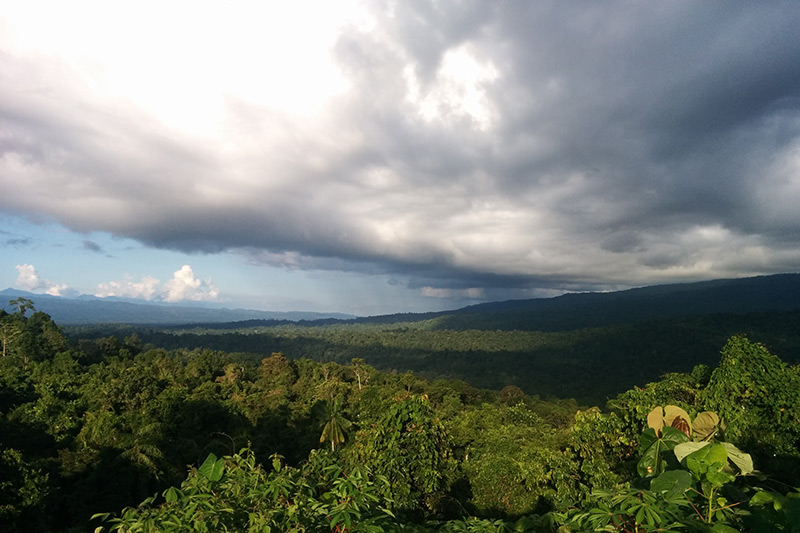
He was also very fond of his machete, swinging it eagerly in expanding arcs, decapitating saplings left and right, and annihilating entire rattan thickets with a few feverish slashes. This was clearly a regular and constant exercise for him, and his forearms were about the size of an average man’s leg. I advised everyone in the group to give him at least a three-meter working radius as he chopped out a trail wide enough for a small car to pass through. In between the frenzied cutting, he would pause to stalk forward quietly, peering left and right in search of the “mambruk”. The Victoria Crowned Pigeon, like other members of the genus, forages mainly on the ground, looking for fallen fruits and seeds. Once a bird is disturbed it will often fly off the ground with loud, explosive wing flaps, landing on hidden perches high in the canopy. We were hoping to hear the explosive wing flaps and track them down.
During one of his stalks about five meters in front of me, Dante suddenly froze, his face contorted with excitement, he pointed his machete towards a thicket right next to him. He started mouthing a word in my direction, I tried to read his lips, “mambruk”?? He repeatedly mouthed the word until it came out in a forced whisper, “cassowary”! Just as I was about to turn and convey this surprising information, something huge leapt out of the thicket and stomped away on heavy legs. Whatever it was, it was gone. Luckily, at least two members of the group had looked in the right direction and seen the brown blur of a juvenile Northern Cassowary run for cover, likely half a kilometer into the forest by now. Wow, that was unexpected, and everyone was on edge with excitement.
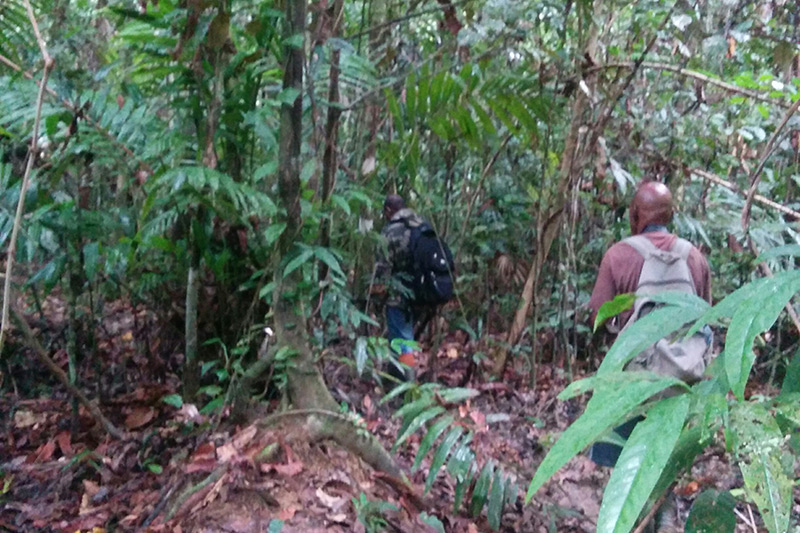
We continued further into the forest that held larger and larger trees and thickening mud. In a particularly dense section, we pushed through some palm fronds and Dante was beside himself again. This time I could clearly understand the word: “mambruk, mambruk!” He waved his machete into the general direction, and kept waving it in circles right next to my head as I advanced carefully to figure out the location of the birds. I could barely make out a single bird perched high in the distant canopy and tried to get the scope into place. The muddy, uneven ground made it difficult, the dense palms allowed for only the smallest window, the sweat pouring into my eyes slowed things a bit, and Dante still waving his machete right next to my head, yelling “mambruk, mambruk” over and over, didn’t exactly have a calming effect either! Plus, I could feel the rising panic in the group lined up behind me, all eager to get a view of this bird. As soon as I had fixed the bird in the scope, I ducked out of the way to let the first person behind me have a look.
An explosive wing clap later, the pigeons were out a sight, flying off in one swoosh that left the branch they had perched on swaying. Dante was still inscribing figure-eights in the air with his machete, saying “mambruk,” but eventually slowed down after he realized the birds were out of sight. As exciting as it was, it was disappointing since no one got to see the birds. The local guides suddenly scattered quickly, chasing after the pigeons, and we were left standing in the middle of the New Guinean jungle without a pigeon or local guide in sight. Eventually, I decided to move forward a bit by following a rocky ravine to see if we could locate the birds again. A slight movement high in the canopy caught my eye and, training my binoculars on the spot, I first noted the red eye and then the fine crest of a Victoria Crowned Pigeon. This time we shuffled carefully into position and were able to get scope views. After finding a better window, we eventually noticed two more birds and everyone had good looks and some distant photo opportunities. What a relief! The birds soon moved off, but we didn’t have to worry since our expert local guides relocated them quickly. This time they were perched lower down and had settled, allowing everyone to get lengthy views and take plenty of photos, with all local guides, the group, and pigeons finally reunited.
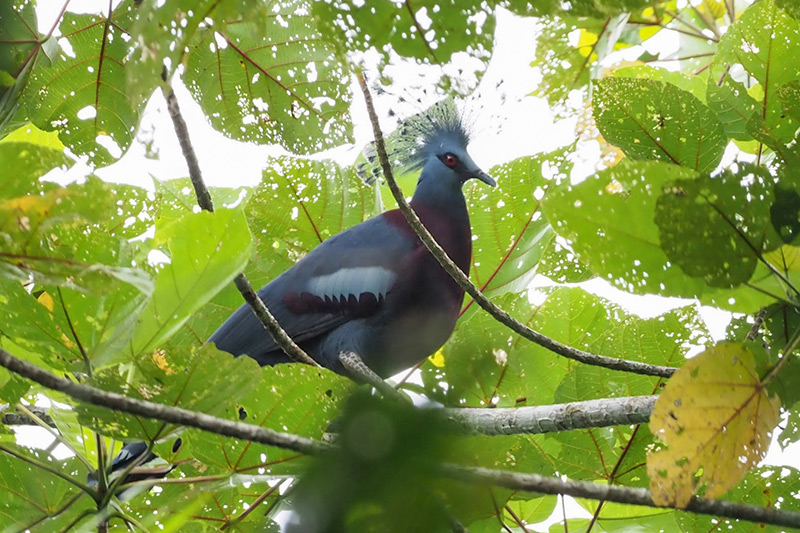
After we emerged from the thicket we had worked our way into, we celebrated all around, took a well-deserved water break, and began the walk back towards the edge of the forest. We had covered quite a distance, but the hike out seemed easy, the forest a bit cooler and brighter, and we even picked up a few new birds. With so many excellent species and highlights in West Papua there was always something to celebrate, but our adventure with Dante and the “mambruk” was definitely a high note. This was just one of the nearly daily adventures in the wilds of West Papua, where remote mountains and nearly untouched forests offer some of the most exciting birding on the planet.
In January of 2014, I joined the Rockjumper Team, and have thoroughly enjoyed my time here ever since. When asked to write something for this, I thought just picking out one story to share would be too difficult. Instead, I took a different approach, and have decided to share mostly photos of my time with Rockjumper, with just a few lines to give you some context on the exciting adventures I’ve had. I hope you enjoy!
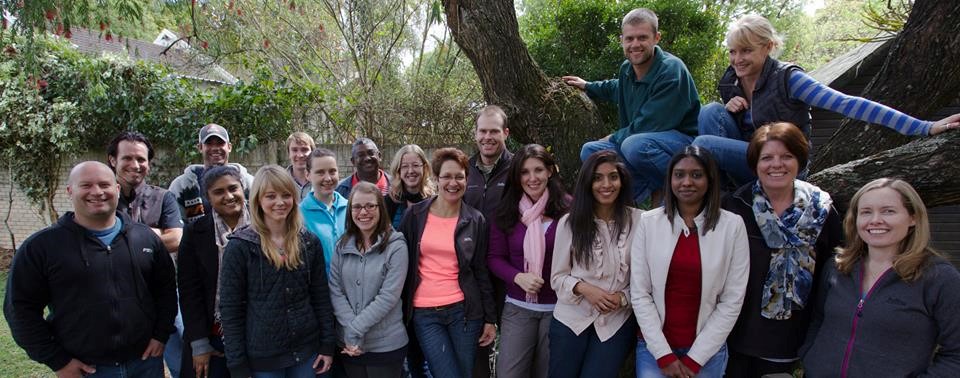
On one weekend, I had the chance to travel to Lesotho on an office girls’ getaway, which was so much fun! We spotted the “Rockjumper” while traveling up Sani pass and, when we reached the top, had a drink at the “highest pub in Africa” which was such a treat.
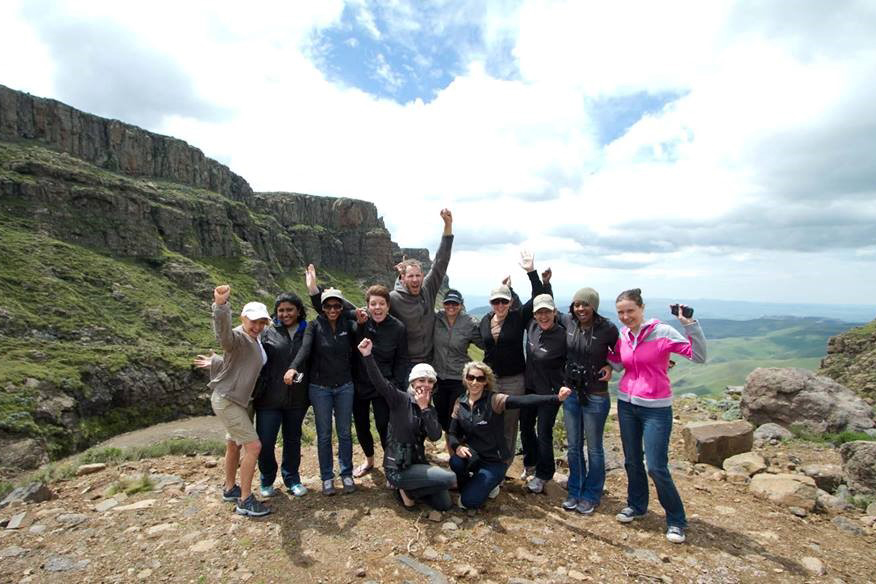
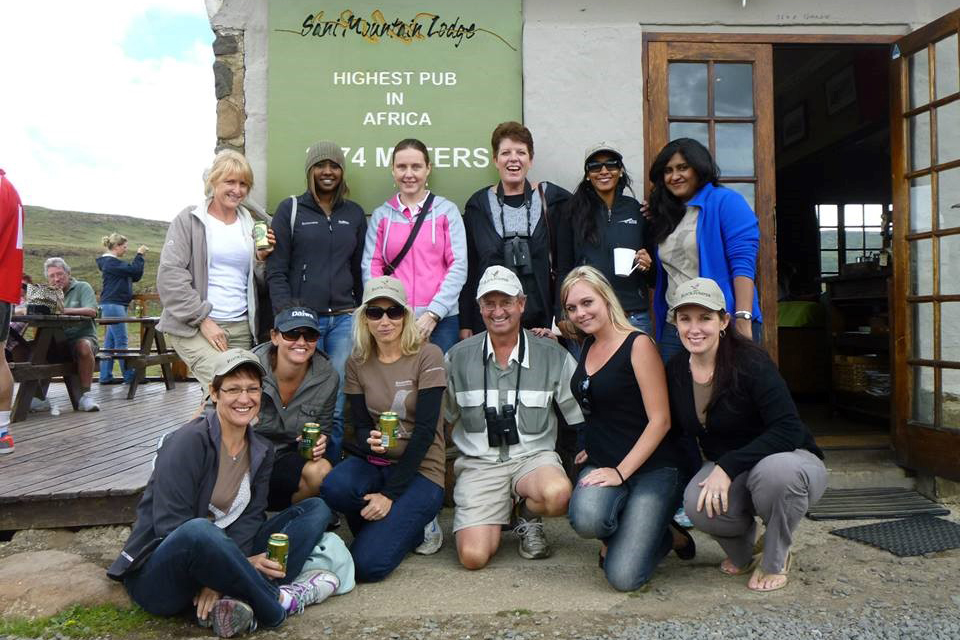
In 2017, the whole office and a bunch of the guides were able to join the “flock at sea” cruise put on by BirdLife South Africa. It was a very memorable cruise, and I got to see a lot of sea birds.
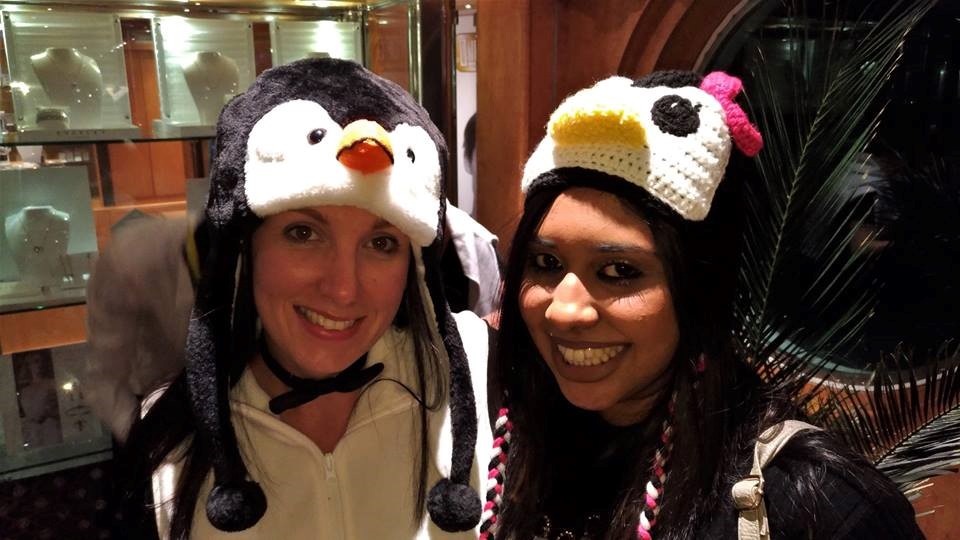
Recently, some of the office staff have started birding around Hilton and Pietermaritzburg after work. These birding sessions have been great, and being able to bring our families along is such a bonus!
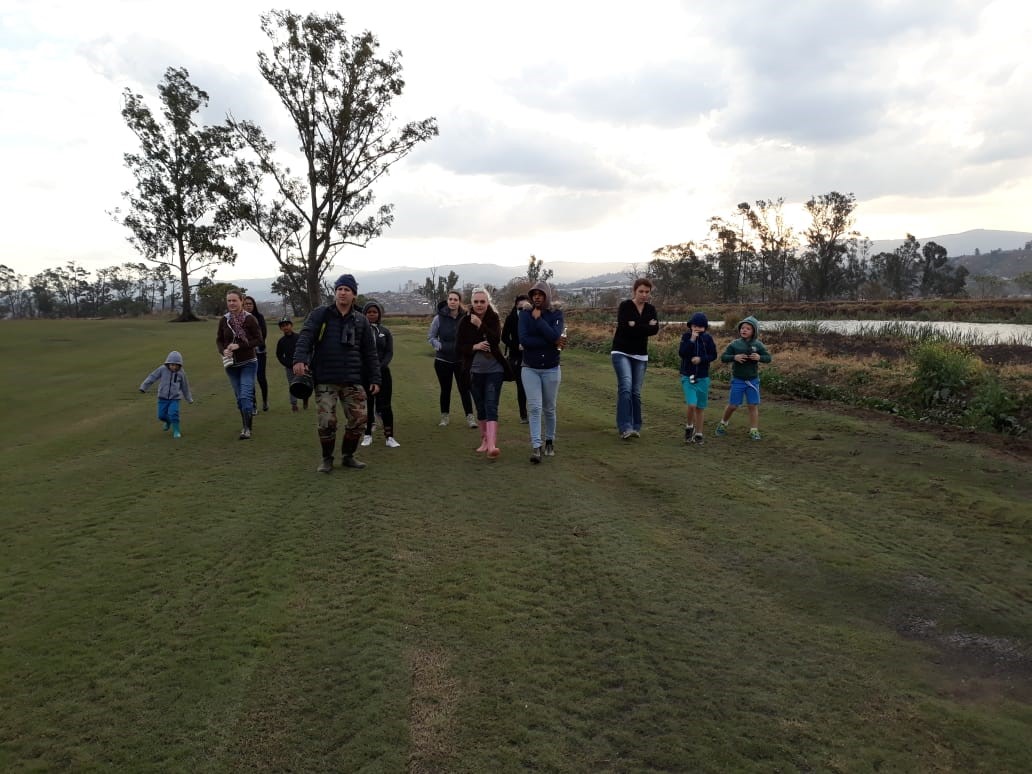
Since starting, I have had the pleasure of working in several departments, and I’ve loved my experiences in every one of them. Rockjumper has grown so much in the last 5 years. Well done to Adam and the team on 21 years!!!
In April of 2002, Adam Riley told me that a group of guests were very keen to do a birding tour of Ghana the following year, and that since we hadn’t been there before, we needed to do a reconnaissance trip in May, the following month, so that we could design the best tour possible for the guests. So I set about trying to find out as much information before our trip as possible. There weren’t any trip reports for the country bar one, a Danish ornithological report from 1977, but it was written in Danish. Thankfully, Adam had a Danish friend who was able to translate it for us, and we used this information to form the basis of our trip. With such little information, we still weren’t quite sure what to expect, but we made a three-week itinerary anyway, and set off in May on what turned out to be a wonderful birding expedition.
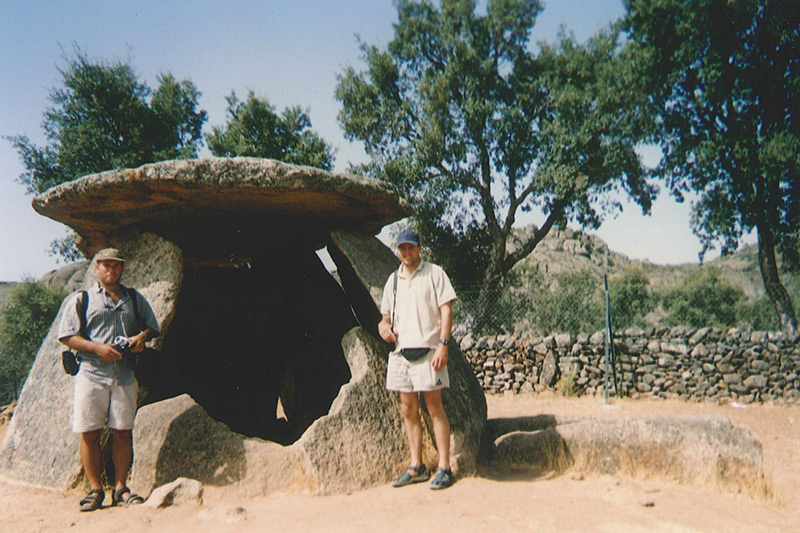
Before we left, we were told that the forests had been destroyed, and that it wasn’t even worth visiting. While we did note severe deforestation, the birds here proved to be amazingly resilient, and we found that the fantastic birding we experienced made it well worth leading tours here. One of the key sites we visited was Kakum National Park, in particular the fantastic Kakum Canopy Walkway. This spot is so popular with birders now, that they actually give birders exclusive access to it between 6 and 9 am every morning, before the general tourists are allowed to enter. This works well for the birders, who enjoy undisturbed birding during the key hours of the day, and the park benefits from additional income for these services. A real win-win situation. Another hotspot for birding turned out to be the impressive Mole National Park. A new road to the park has recently been completed, making a visit to this fabulous reserve much more pleasurable now – the old corrugated road took 5 hours to traverse, and it can now be done in 2!
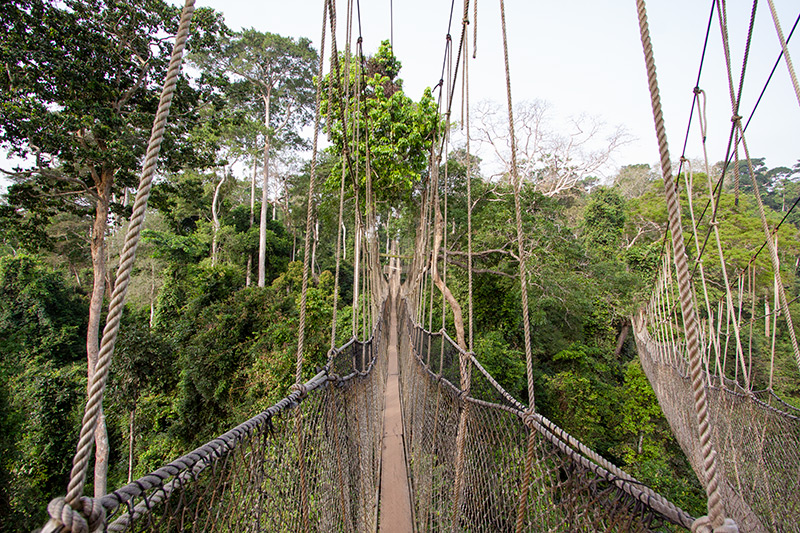
After completing our wonderful reconnaissance trip, we returned home, excitedly set up a detailed itinerary, finalized the logistics on the ground in Ghana, and did the costing for the trip. Adam then contacted the clients with our proud new offering, and they came back to him to say that they had made a huge ‘faux pas’ and had meant to say The Gambia, not Ghana! Thankfully, they recognised how much effort we had gone through to make this trip for them possible, and were happy to go to Ghana instead. So, after leading the first-ever birding tour to Ghana the following year by accident, we have been leading successful trips there ever since! Rockjumper has now lead more than 50 birding tours to this fabulous country.
The moral of the story: put in the effort, and you’ll usually reap the rewards.
Rockjumper is 21 years old this year!
The world has changed so much in the last 20 years, the population has grown by nearly a quarter, and the global urban population has risen by 1.6 billion between 1994 and 2014. More than half of the world’s people now live in towns or cities, and our city lifestyle has caused so many of us to lose our connection with nature, our communities and sometimes ourselves. So, for me it feels good knowing that I am part of a company that is obsessed with making a difference, from its conservation partnerships and initiatives to providing the ultimate birding experience by making sure travel dreams come true.
This gives me more than a job or career; it gives me purpose.
I’m 3 years into my career with Rockjumper, and I can categorically state that whilst it has been the most fun I have had during my entire 20-year working career, it has also been the greatest continuous learning curve that I have experienced. We are constantly learning from each other or the market, deep diving to understand root causes that enable us to take better actions in the future. As a PROGRESSIVE and dynamic team, we continuously challenge ourselves to make ours tours and tour experiences as perfect as possible for our clients, and work tirelessly in our teams to achieve our goals..
The super stars of Rockjumper, namely the passionate tour leaders delivering our guided tours and our dedicated office staff who make everything happen seamlessly behind the scenes, have all collectively contributed to us achieving this noteworthy 21st birthday milestone. Our teams across the world regularly go above and beyond the call of duty for our guests, as our remarkable 21 stories will all showcase.

It has been an honor to see how our senior management team has transformed over the last 2 years through the guidance and mentorship of our founder, Adam Riley. He has helped shape us into the solid team that it is today. Each team member brings his/her own unique set of key skills and perspectives, thereby aiding innovation and generating creative solutions.
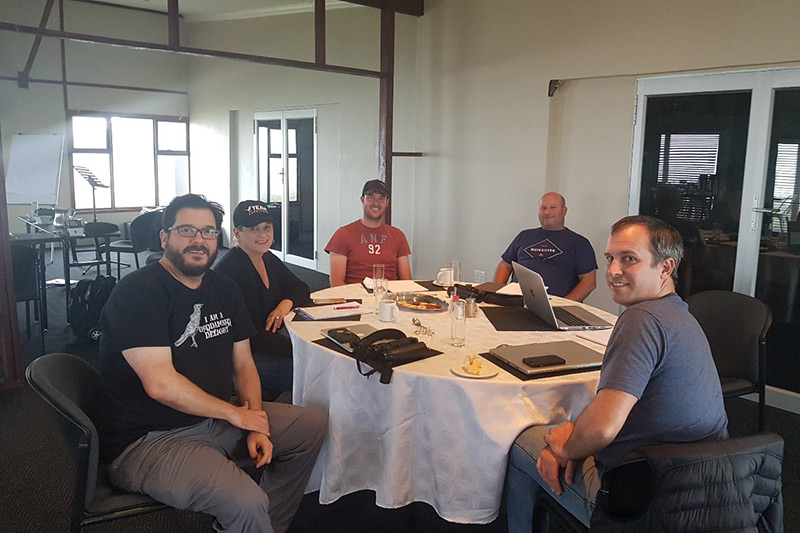
For my story, I thought I’d share a bit on each of our management team:
George Armistead (far left) heads up our Conservation Tours Department and is our Chief Networking Officer. He is based in the USA and focuses on strengthening our conservation partnerships, which is affiliated to one of our most important core values: PROTECTING and celebrating biodiversity. He not only runs our USA operations but co-manages all marketing initiatives with Keith Valentine. George is an enthusiastic speaker and author. Birding is in his blood and his warmth is felt by all the people he interacts with.
Keith Valentine (middle) is our Managing Director for South Africa. He has been with the company for over 14 years and brings his unique empathic skills to the management team. He is an exceptional storyteller, regaling staff and guests alike with interesting stories and anecdotes of the world of birding and Rockjumper. He has been a passionate birder since a young boy, a top-quality guide for many years prior to management, and constantly inspires the teams to be PASSIONATE about our work.
Clayton Burne (far right) is our Operations Manager and our most important and astute team member. He is our voice of reason as he pushes us to question the HOW, focus on the detail, and drives us to turn strategy into action. He has been instrumental in taking Rockjumper into the digital era by improving our efficiency through automation and has achieved this by equipping all our service departments with the necessary tools to be PEERLESS in our service. A costing and pricing master, Clayton has ensured rapid time to market and only the best value for money tours are offered to guests.
Adam Riley (middle right) founder, coach and mentor. Adam has empowered his senior management team to take ownership, set strategy and implement initiatives throughout the company. His trust and confidence in the management team, tour leaders and office staff reflect his ability to turn everyone that is hungry for the challenge into the next generation of leaders through continuous knowledge sharing. A great example of this was providing his management team with the opportunity to attend the prestigious 18-month Fasttrack program. Through him, we have been tested to step out of our comfort zone and realize our hidden talents.
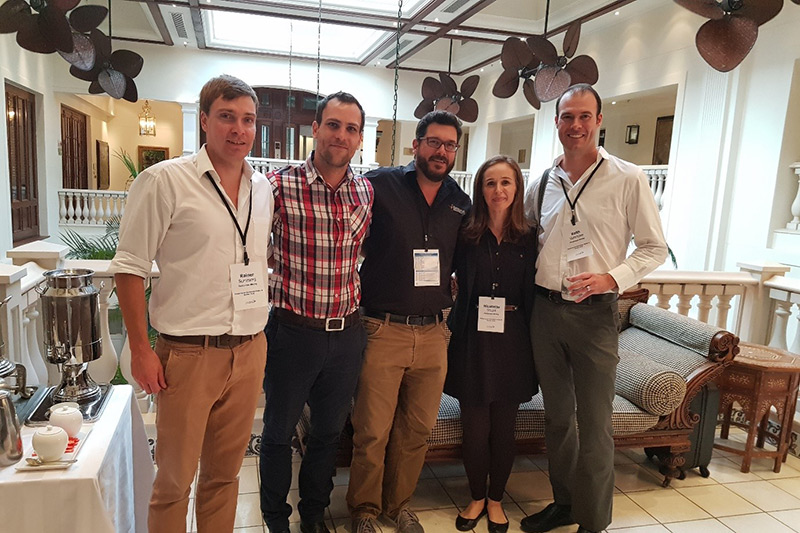
Life will never be the same again, working with these crazy, fun but incredibly committed people. I might not keep a personal species list, but I’ve found my purpose by being part of a company that strives to make every tour a unique and memorable one for our passionate clients who understand how important nature and conservation are for all generations.
Never again will I lose my connection with nature, my community or myself.
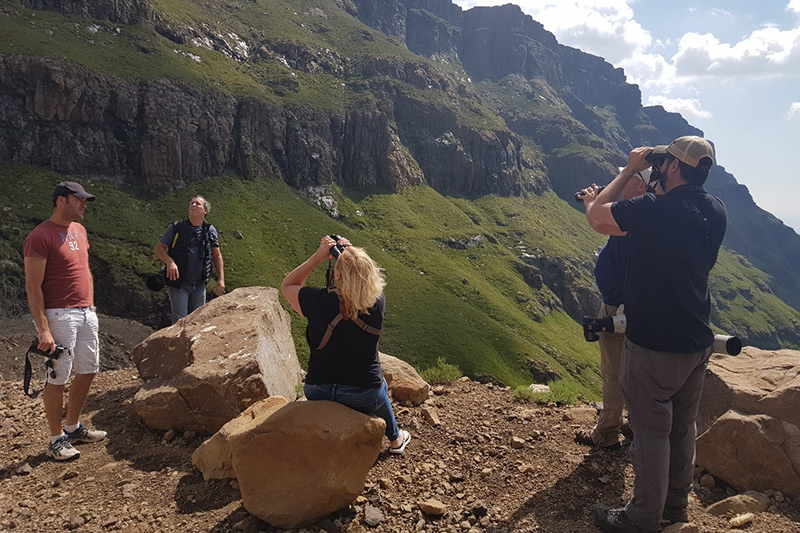
As a non-birder, the prospect of working for a company that’s entire business revolves around birds and birding was steeped in irony. So, naturally, I embraced it with open arms.
When I started working for Rockjumper as their editor and marketing assistant, the only experience I had had with birding was watching David Frankel’s ‘The Big Year’, and the distant memories of my father calling out bird names as we drove through Kruger National Park – which, as a five-year-old, I showed no interest in, as I was far too engrossed in trying to see a lion hunt or something equally as epic. So to say my experience with the activity was ‘lacking’ would be appropriate, and perhaps even understated. However, as my time here has progressed and I have had the opportunity to read about all the adventures and stories of our tours, my interest has been piqued and my knowledge of the world’s birds has grown exponentially.
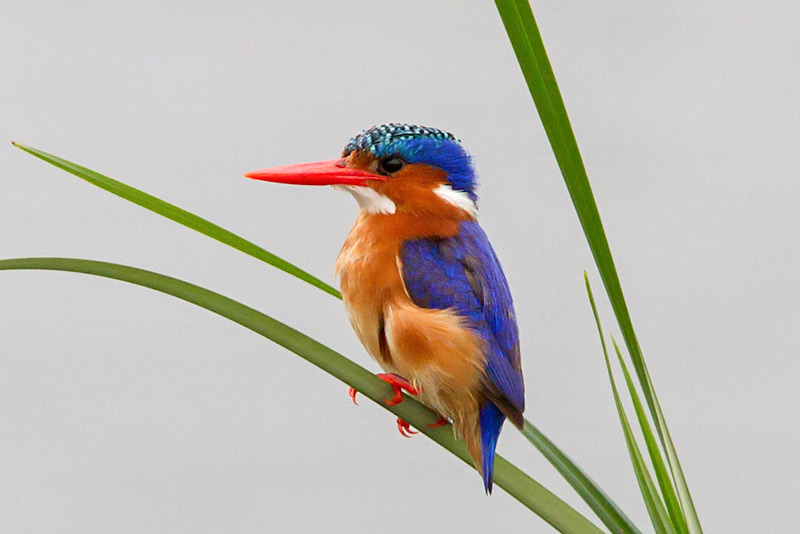
When the opportunity arose for me to join in on a mega twitch, my curiosity took over and I accepted the offer immediately. A Malagasy Pond Heron had been seen in Phinda Game Reserve, near Hluhluwe, KwaZulu-Natal. Usually over-wintering much further north on the continent, in areas like Kenya, Tanzania and northern Mozambique, this was the first-ever confirmed sighting of the bird in South Africa – easily over 1,000 kilometers south of where it usually occurs. The confirmation sparked chaos in the South African birding community, and birding fanatics were very quickly traveling from around the country to see it. Because the bird was settled in a privately-owned section of the reserve, access was limited to two game drives a day (one in the morning and the other in the afternoon) so getting an opportunity to see it required some quick phone dialling and a bit of luck. Thankfully, we had both, and soon the next available safari vehicle was booked, which was to head out the next morning.
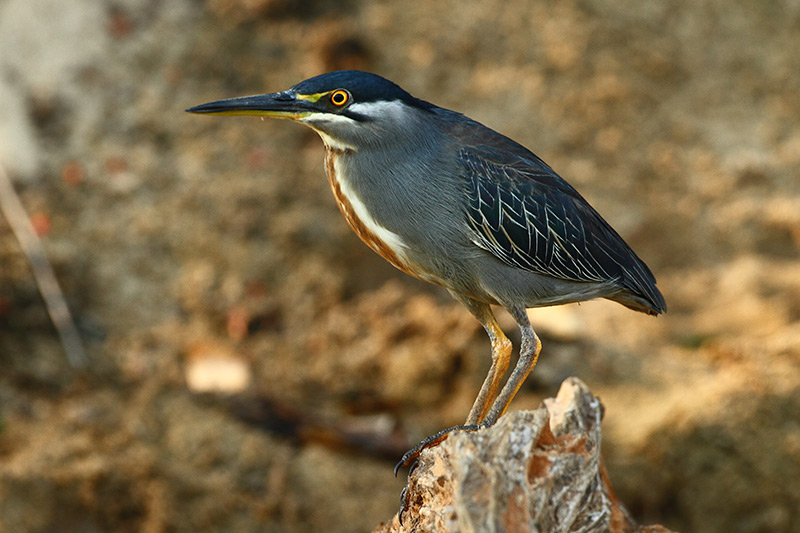
To get where we needed to be on time, David Hoddinott, Andre Bernon and I left almost immediately after work, first picking up some essentials like jackets and binoculars and then driving several hours, well into the night, to reach our sleeping point in the town of Empangeni, where Andre’s parents reside. (Our co-workers and safari vehicle companions, Clayton Burne, Megan Taylor and their eight-year-old daughter, Kaily – our good-luck charm – decided leaving at midnight and driving through the night to reach the reserve gates on time was the better plan). We arrived, dropped our things off, and paid for the safari vehicle before taking a quick trip to extract as much information as possible from David and Andre’s friends, who had seen the heron that afternoon. Once we knew what we needed, I was regaled with a myriad of twitching stories, since this was my first. Hearing the tales of what some people went through (or how much they paid) to see one bird blew me away, and I definitely didn’t comprehend, what seemed to me then, an incredibly unhealthy obsession (One story recalled a man who had ruined SEVERAL of his marriages throughout his twitching career). Stupefied by what I had heard, we retreated to our beds in preparation for an awakening at what was, especially to someone who was still a student only a year prior, a completely ungodly hour! (I lay a while, trying to determine if what I felt for the people in the night’s stories was some twisted form of respect or just disdain for their level of passion – I’m still not sure).
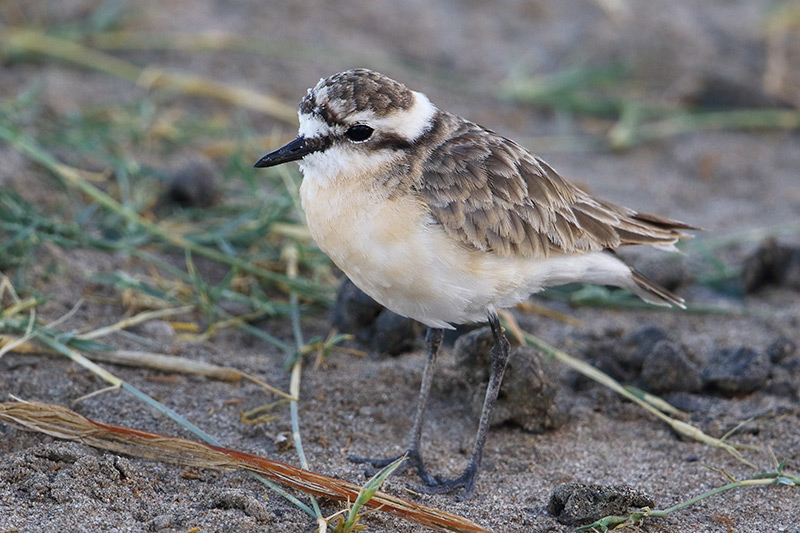
We woke up on time the next morning (surprisingly, for me), and, fuelled by a strong cup of coffee, drove the last hour and a bit to get to the reserve well before sunlight. Just as the sun reared its head over the distant horizon, we climbed into our safari vehicle, blankets in hand, and embarked on our journey to the lake where the heron had been seen. We started off by exploring the northern side of the lake (this was where the bird was seen the previous afternoon). Our driver, Brendan, would stop the vehicle regularly to allow us to scan the reeds and water’s edge in search of our elusive target. Eventually, we reached a point on the edge of the lake where we couldn’t continue further, and we still hadn’t seen the bird. With confidence beginning to dwindle, we all made an effort to stay positive and elected to try our luck at the southern end of the lake.
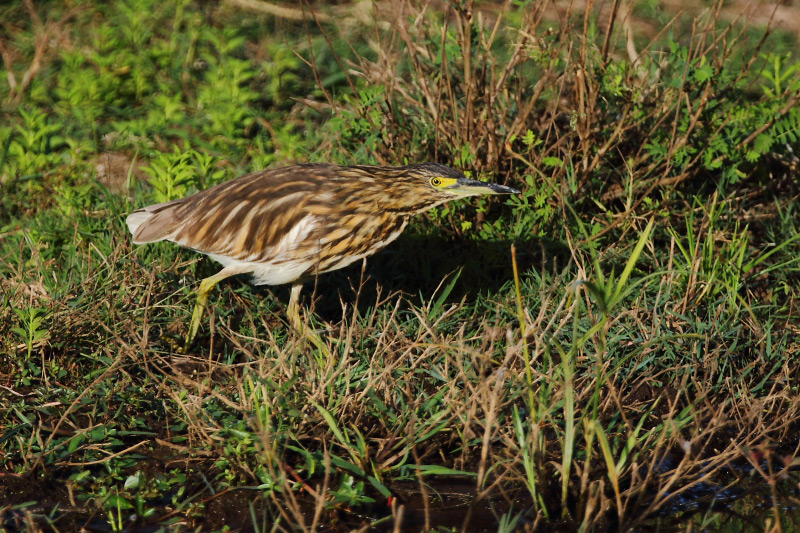
As soon as we reached the southern edge, we began scanning once again, applying the same tactic as before. Once again, our efforts were for nought. Feeling significantly less confident now, we decided to head back, recharge with some coffee, and tackle the northern side of the lake one more time, where hopefully the heron would come out to bask in the warmth of the sunlight. As we headed back, now slightly despondent, David and Andre took to mentoring me on some of the birds we had seen in the area, from Kittlitz’s Plovers, Black-winged Stilts and Striated Herons to lovely Malachite Kingfishers; it was great to experience some of the birds I had only previously seen in pictures.
Suddenly, in the middle of my field crash-course, David spotted a heron about 80 meters away, on the water’s edge across from where we were driving. Instructing Brendan to stop the vehicle, he set his binoculars on the mystery bird and within a second called out: “That’s it!” in a child-like daze of excitement. The rest of the car quietly erupted into feelings of elation as we all got our own binoculars and cameras onto the incredibly camouflaged bird. Happy that we had all seen it and taken photos as proof, we took a moment to send high-fives all-around before refocussing our attention to enjoying the bird. It stood motionless for quite some time, emulating a Shoebill as it waited for unfortunate prey to come past. Some did, and we got to watch this special bird feed!
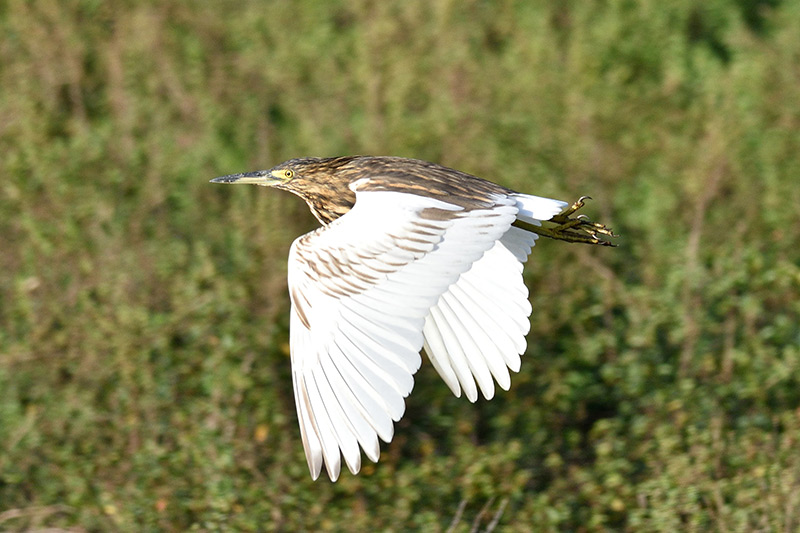
After enjoying extended periods of time with this bird, and spotting a group of rare Lemon-breasted Canaries in the interim, we decided it was time to head back. As we started off, the bird took flight, revealing incredible amounts of white. Cameras went into rapid-fire before it landed only 20 meters from its original position, now in a much more open bit of land. Photography continued, and soon, so did we, when it took flight again, landing on a lone stump over the water this time, providing even better views before flying again, the white still just as striking to me as the first time.
Happy with our time with the bird, and not wanting to disturb its peace any further, we headed off to enjoy a much-needed and much-deserved cup of coffee and some cookies. The good mood of the group was palpable, it was great to enjoy such a rare occurrence in person, and I’m happy that my first proper birding and twitching experience was such a success. (I think mainly, though, I’m just happy that I avoided a long and very awkward 5-hour trip home with some very upset birders!).
It began as a beautiful, clear day on the 25th of June 2007, at the base of the Virunga Volcanoes in northern Rwanda – a legendary part of the world, as it holds some of the last significant populations of the critically endangered Mountain Gorilla. For most nature and wildlife enthusiasts, seeing a Mountain Gorilla in its natural habitat is one of the best moments imaginable, and this morning was going to be that morning. All went as planned through the early part of the day, with some members of the group doing gorilla trekking and others heading out to find Golden Monkeys. The sightings were exceptional, and by midday we had all returned to our accommodations for a hearty lunch and fantastic recollections of the morning’s adventure.
We were due to leave Volcanoes National Park today, and head south-west to the mighty Albertine Rift forests of Nyungwe, famed for holding a suite of the region’s most sought-after birds, and excitement was high. The only drawback was that a 6-hour drive awaited us. We were well aware of this, but still, it wasn’t exactly something we were thoroughly looking forward to. But then, in popped our local agent and proceeded to tell us about a potential boating option that we could do instead of the long drive. The boat trip would take around 5 hours, and we would get to see a completely different part of Rwanda from the waters of one of the great rift valley lakes – Lake Kivu. We quickly weighed up our options in front of us, and it was a unanimous vote, with the boat trip on Lake Kivu the unopposed winner.
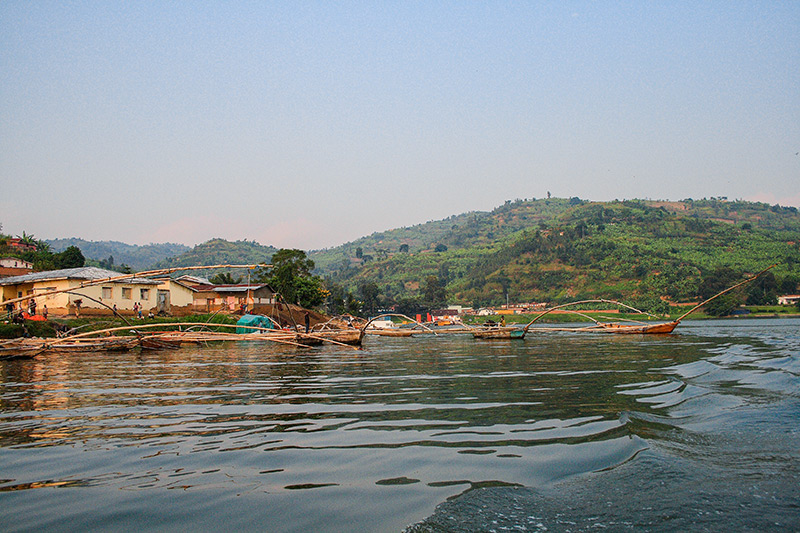
After our delicious lunch, we made our way across to the edge of Lake Kivu to meet our skipper and board our boat. He was a bit late, but it was no train smash, as we were all excited about the new adventure that awaited us. Soon after boarding and finding our seats, the engines were started and we were puttering out into the lake proper, taking in the variety of sites and smells, passing small fishing villages and getting to observe Rwandan life on the banks of this great lake. Time passes quickly when you are having fun, and before long we could see the sun starting to dip lower and lower on the horizon. A clear evening then presented us with a beautiful sunset. This was quite simply paradise and we were getting to enjoy it in spades. A few minutes later we passed by a small island and were blown away to find a fishing White-backed Night Heron, a species that can be exceptionally difficult to find, and never occurs at high density anywhere in its range. Soaking up yet another magical moment, I turned to our skipper and asked casually how much further until we reach our destination. His reply: “We are about halfway there.” I was immediately taken aback and began to quickly do the math, which wasn’t looking good, as it was putting us in for a 10 pm arrival, far later than any of us envisioned. Anyway, what could we do but enjoy the last bit of light across the water and watch the local fishing boats start to come out onto the lake. As it got darker, what became immediately apparent was that we had no lights on the boat. Our skipper seemed competent, though, and the feeling was he probably drove about in the dark on the lake all the time. Still, it wasn’t the greatest feeling, but the moon was out and all seemed to be going okay until the wind started to pick up.
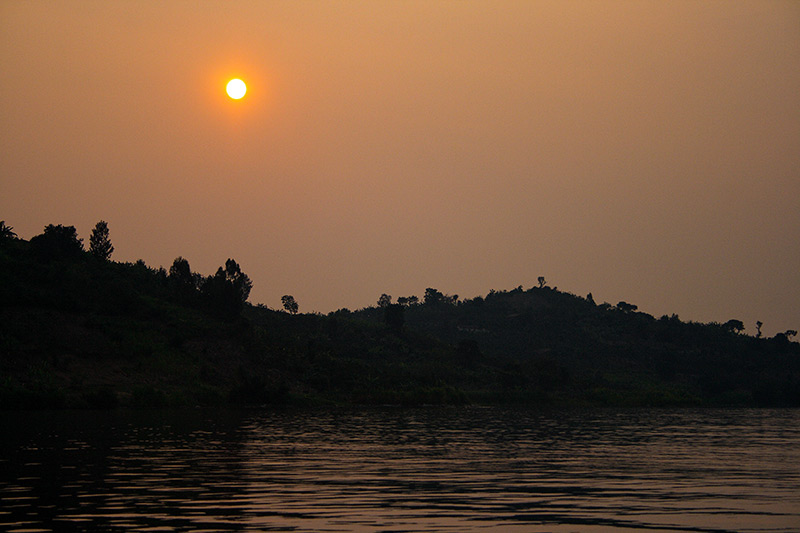
A swell began on the lake and it got more and more choppy. Our skipper then started to get more and more unhappy about the wind and, eventually, we pulled into a small bay. Here, we waited and waited for the wind to hopefully drop down while our skipper disappeared for an extended period. This was tough going now, as we had nowhere else to go, no dinner and no bathroom facilities onboard. Hours passed and eventually, at around 11 pm, he returned to inform us that the wind had dropped off sufficiently and we could continue our journey. With the almost unbelievable happenings over the last few hours, we were all delighted to hear the engine start-up and, despite the ridiculous hour of night, were thrilled to be back on the water and at least moving in the right direction. Over the course of the next few hours, our little boat whipped this way and that, skipping across the lake and weaving between the vast number of fishing vessels. We joked that we probably ended up spending a fair bit of time in neighbouring DRC territory without even knowing! Despite the hour of night and it being well into the 26th of June at this point, nobody was sleeping. We were all anxiously gazing out ahead for clusters of lights, trying to convince ourselves that this was finally going to be it – our destination. Too many times we were disappointed, but eventually the moment had to arrive. Twelve years on and those final minutes on the boat are all a bit of a blur, but the reality was that we had arrived at Cyungugu at last. I believe it was around 5 am. We immediately made our way across to our guest house, where we were greeted with shocked faces and an uncountable number of apologies. Given the time of day, we ended up doing what any self-respecting birders would do: grabbed a quick breakfast and made for Nyungwe Forest. Our morning of birding will go down as one of my most memorable experiences, largely due to the night that it was, as we racked up an extraordinary number of quality Albertine Rift endemics.
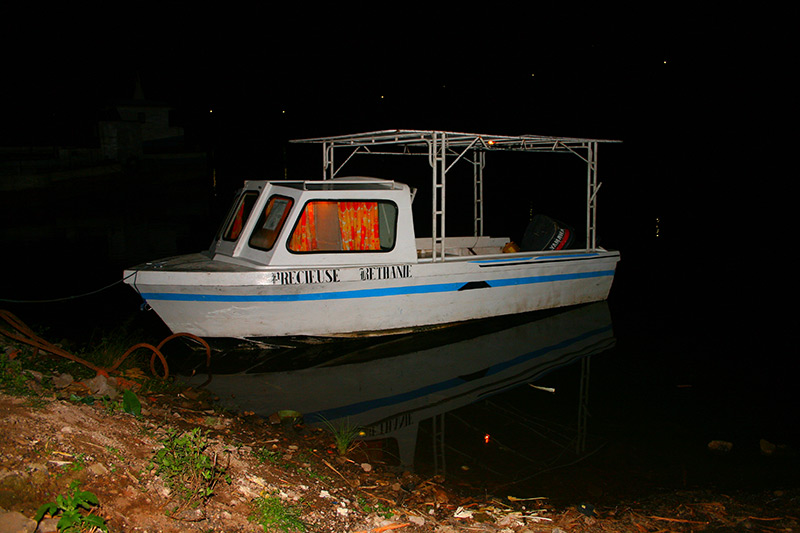
The tale of the infamous Lake Kivu boat trip is now rather legendary around Rockjumper circles. Those who were part of the ‘experience’ have retold it on numerous occasions around the dinner table and with close friends and family, and I have also been known to bring it up on tour occasionally. For four of the six people on board, this was only their 4th day with me in the field! We then proceeded to explore Uganda directly afterwards and have subsequently travelled to the ends of the earth together, from Cameroon, Ghana and Thailand to India, Malawi and beyond to the Remote West Papuan Islands of Seram, Buru, Obi and the Raja Ampats! I know that everyone involved will remember certain parts in greater detail than me, with different elements taking centre stage. For example, I could have included sitting on top of the fuel cans, with the incessant smell of diesel up our noses at 2 am, or some of the dialogue we shared with our local onboard assistant who we hadn’t met before the boat trip and who had never been on a boat before (if I recall correctly). Regardless, it is one of those stories that in the moment is far from fun; however, when looking back, realising that no serious harm was done, you can smile, even chuckle a little, and put it down to another memorable adventure in Africa!
When I started at Rockjumper, I had to move from Johannesburg to Pietermaritzburg, and came from a very corporate business line. I have always loved nature and camping out in the bush, but growing up in the ‘concrete jungle’ made me somewhat ignorant of what being out in nature actually involves. My dad has a soft spot for animals, but whenever I asked him to take me to Kruger National Park, his answer was always: “Why must I go driving around in 40-degree (104F) heat in the bush, hoping to see something, when I can sit in the comfort of my own lounge, with a beer in hand, and watch the animals on TV.” Who could argue with that?!?
I hate to admit this, but before Rockjumper I didn’t know that ‘birding’ was a thing.
I went for my job interview in Adam’s lounge, which was a bit creepy with all the masks decorating his walls staring down at me, but I found it sort of intriguing. The first thing I mentioned was that I am actually petrified of birds, especially parrots. I really don’t like the hissing, pupil-dilating thing that they do. This was almost frowned upon, but the office manager at the time laughed and admired the honesty, and I was hired soon after. Boy, I had no idea what I was getting myself into.
I started enjoying the office scene and how different my colleagues were. From suits and designer shoes to rough and rugged guys, mostly barefoot, and from stocks and bonds to tits and boobies (the birds…), I didn’t know if I was amused or petrified.
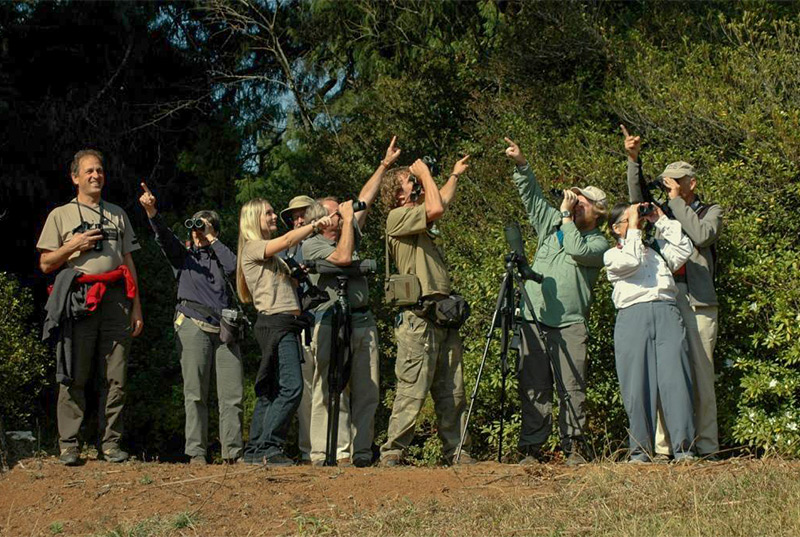
Slowly but surely, I started eavesdropping on the guide conversations, especially when returning from a tour. Their enthusiasm, their drive, their passion. Using lingo like ‘rarity’ and ‘lifer’, and ‘what a cracker’ when looking through photos. It was all so infectious. I started understanding the conversations more and more, and could eventually get involved. I was finally at home.
Okay, maybe I spoke too soon…
They soon set me off on my first birding adventure. Waking up at the crack of dawn to meet up with the group and the guide (who was the craziest character I had ever met), I was excited to meet our guests, but also very nervous. Thankfully, they were lovely and very welcoming, and we quickly boarded the vehicle and set off. I chose the seat right in the back corner. The sun was coming up and it made me feel relaxed and lazy as it warmed my little spot. I closed my eyes, sat back and was ready to enjoy the ride. Suddenly, the whole group started screaming “STOP, STOP.” The driver hit the brakes, everyone dove to the left side of the vehicle, grabbing bins, cameras, books, pens, and my heart just sank. My first thought: Oh my gosh, I think we just hit something, maybe a dog. I wanted to vomit. Then confusion set in hard and fast as high-fives were shared. Why is everyone so excited? I started shrinking back into my chair when someone grabbed my arm, yanked me up and said: “Look! It’s beautiful.” A Long-crested Eagle. I don’t know if I was relieved or flabbergasted. I sat back down, eyes wide open, and giggled hysterically, not knowing what on Earth was going on.
Later on, we got out of the vehicle and walked around in a beautiful little forest. This was nice! The group even tried to get me involved. “See what you can spot.” I thought: YES! I’m getting involved. But everything I spotted got me negative two points… Trash birds apparently… I gave up when I was on negative 100-and-something, and tagged behind the rest of the group, feeling hopeless.
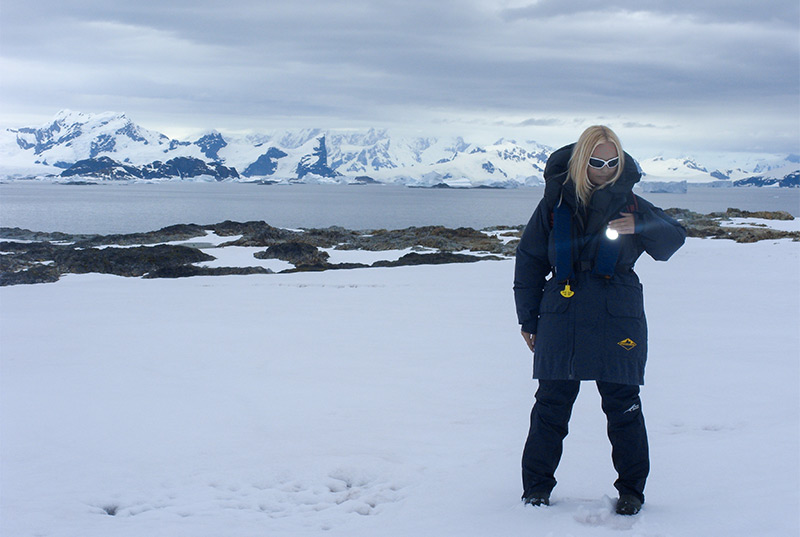
At one point, I saw our guide fiddling with something, but didn’t take much notice. As I walked up next to him, I heard the most horrendous noise right next to my ear and immediately made a run for it, thinking some rabid animal was on the loose. That was when one of our guests clicked that I was clearly a newbie, and took me under his wing. He whispered: “The guide is playing a call that sounds like a bird we want to see.” In my mind, I thought there was no way that would bring anything in, but he just said to wait… Soon, there it came, a Knysna Turaco, stunning, beautiful colours – the most amazing bird I had ever seen. I picked up my bins and was excited to get a closer look. But. What on Earth is going on now? I can see out of my one eye but not the other! Worst bins ever. My hero came to my rescue once again: He walked up to me discreetly, popped the cover off the front, stood behind me and moved my head in the correct direction, then smiled and walked away. Embarrassed but grateful, I followed him like a lost puppy from then on. With a little bit of guidance and patience, I got the hang of it and was hooked!
I did not get fired and, yes, those guests do still travel with us…
12 years later, I’ve now travelled to Argentina, Antarctica, Uganda, Namibia, Egypt, Tanzania, Lesotho and England, and will be going to Madagascar soon; with the help of the legendary guides training us office girls along the way, I have a good number of birds on my list (penguins are still my favourite); I’ve become great at identifying calls, since I am blind as a bat (even with the bin covers off), and I couldn’t see myself being anyone or anywhere else.
And boy do I love coming into the office and telling the boys that I have seen a certain beauty that they have not – yet, of course.
